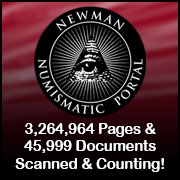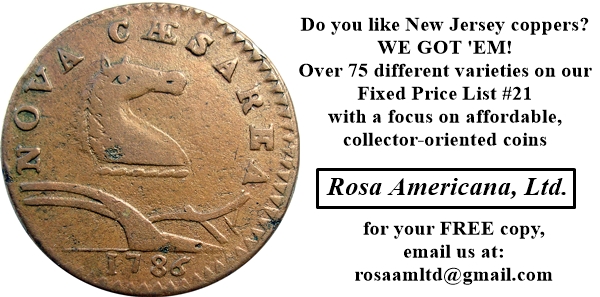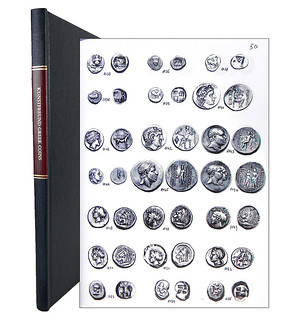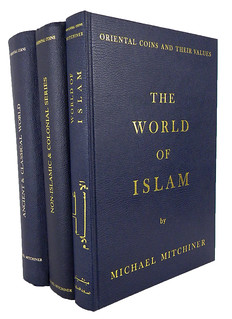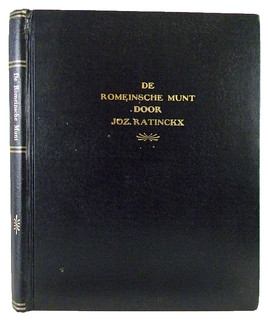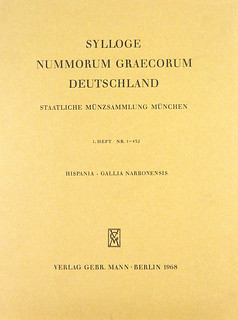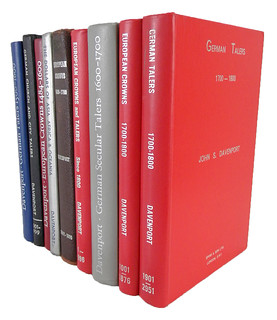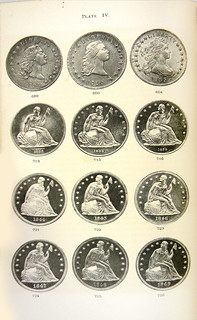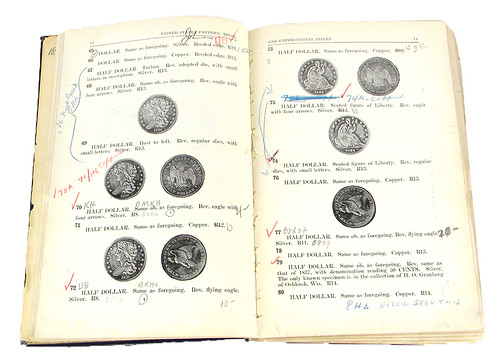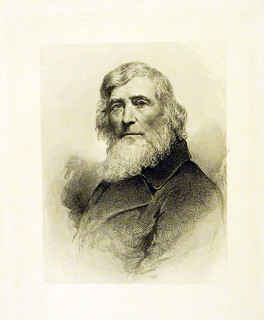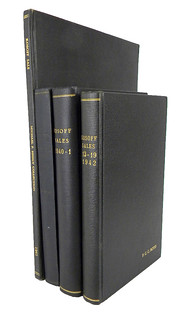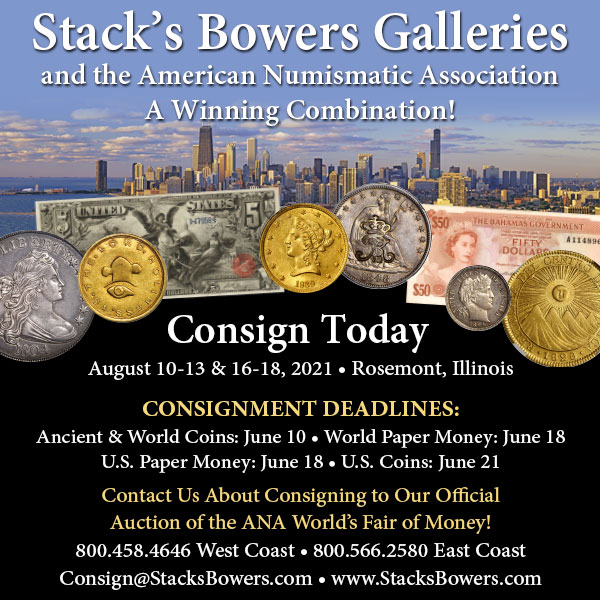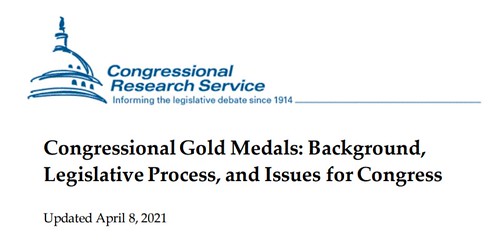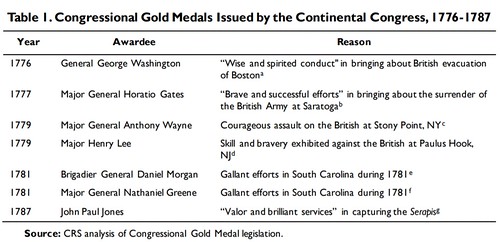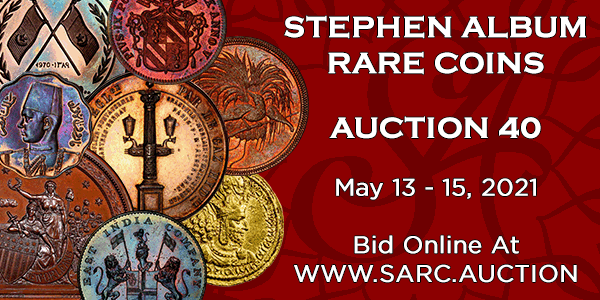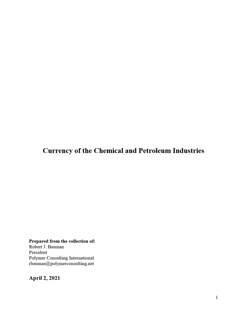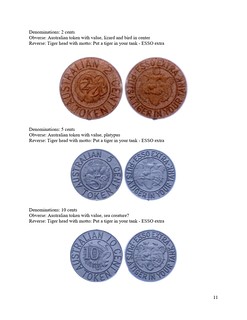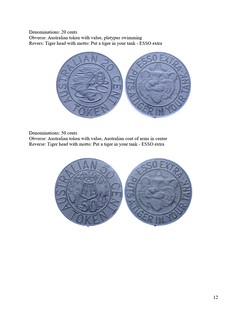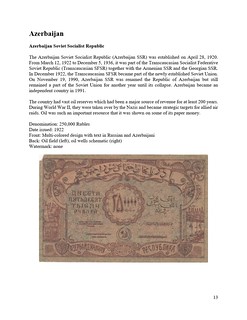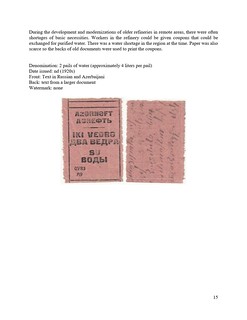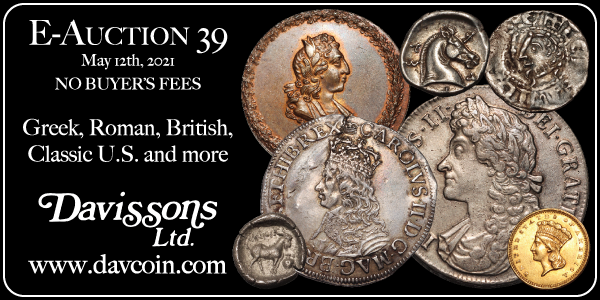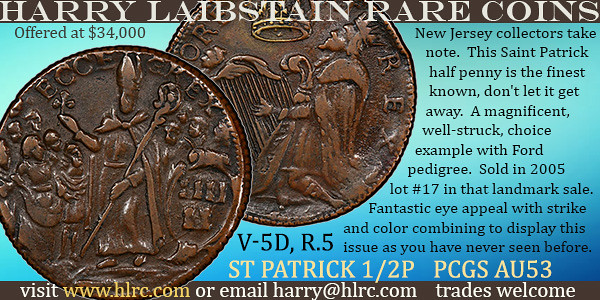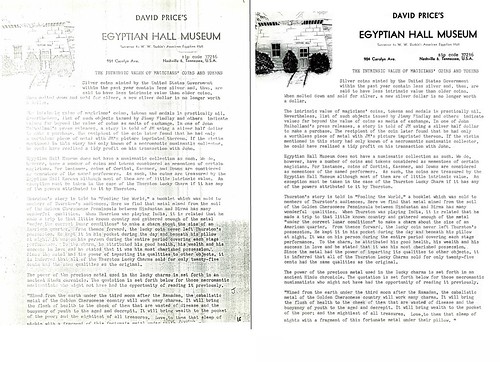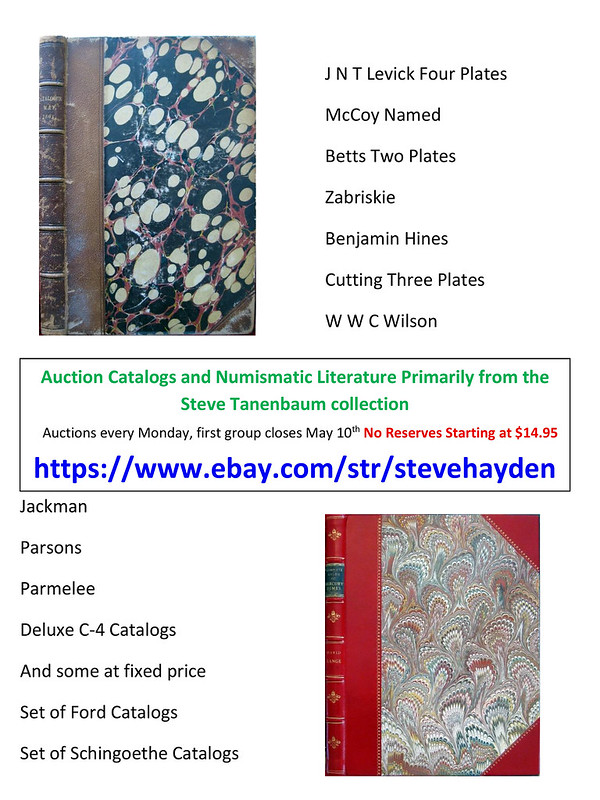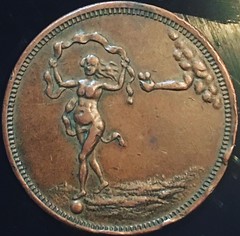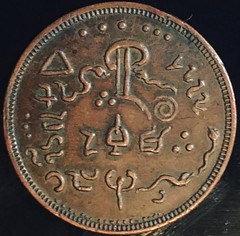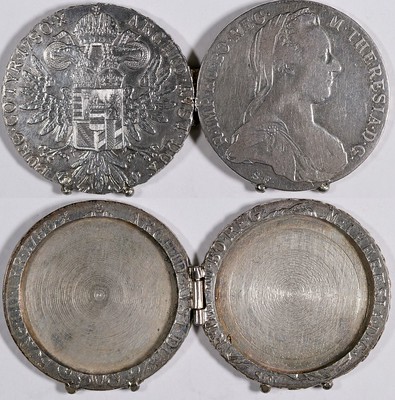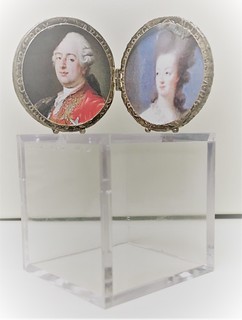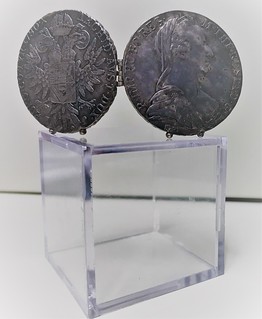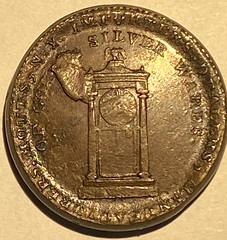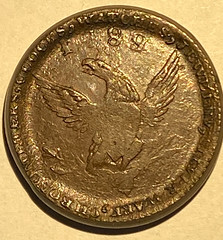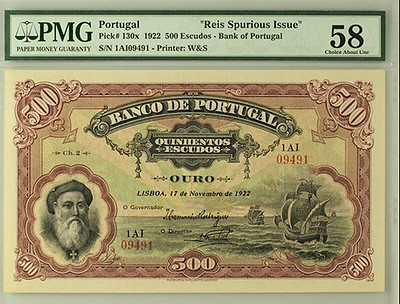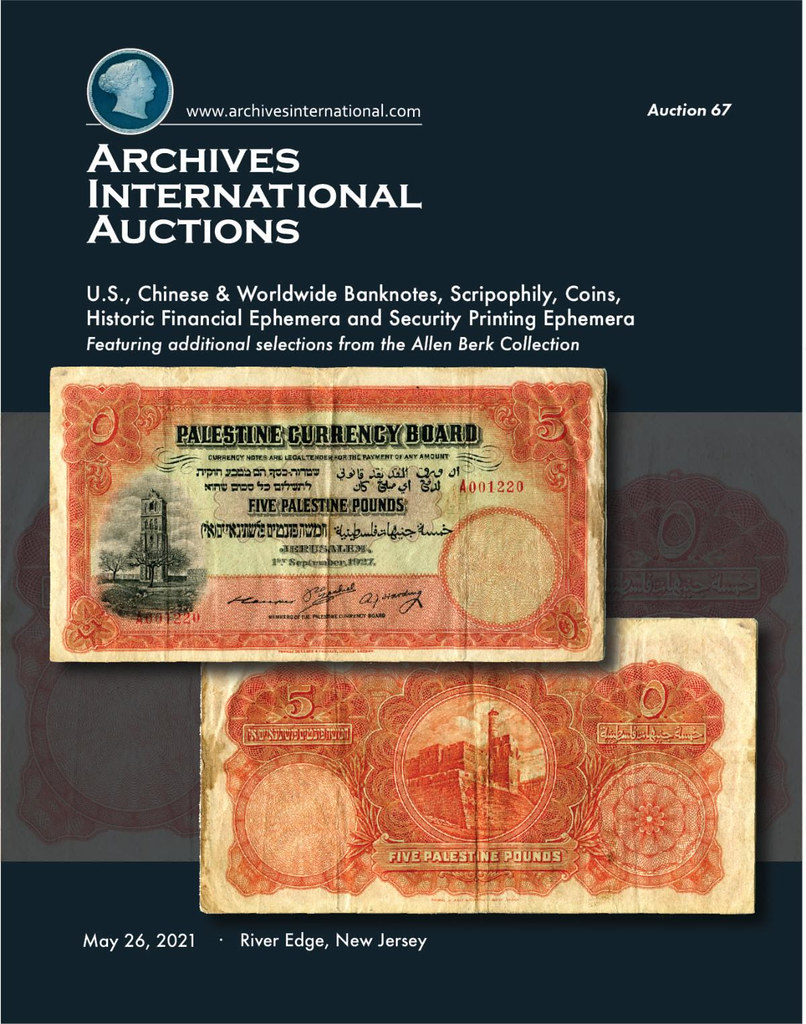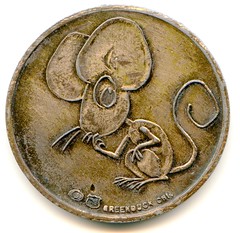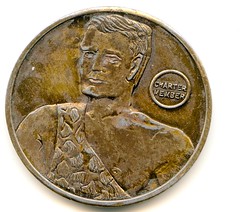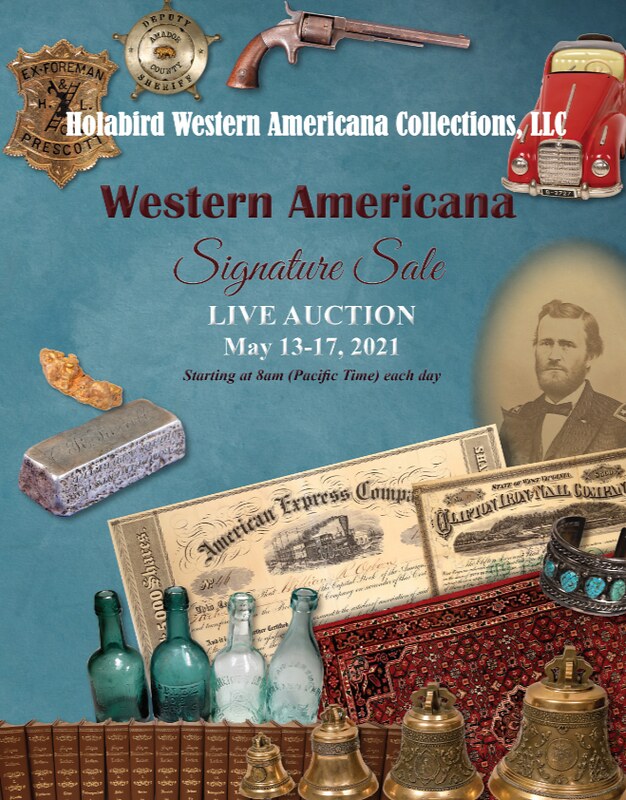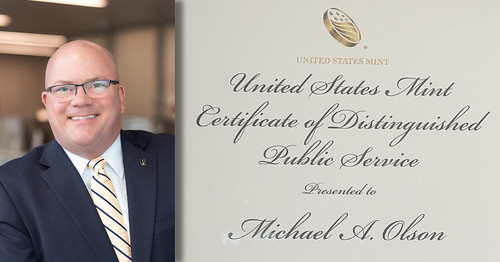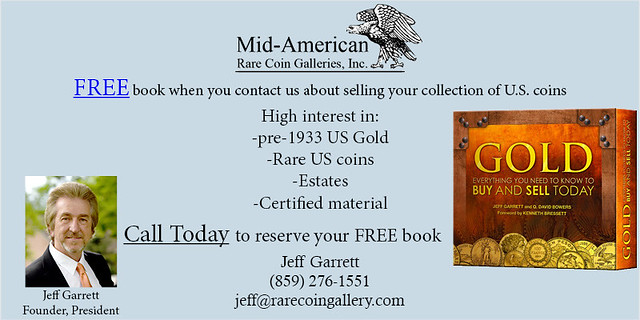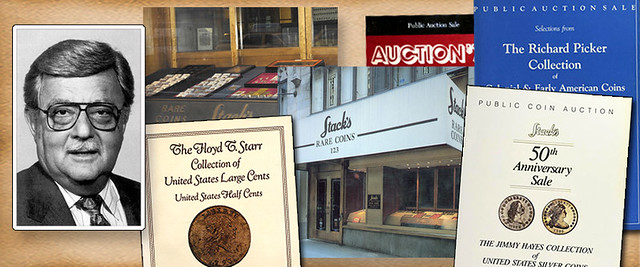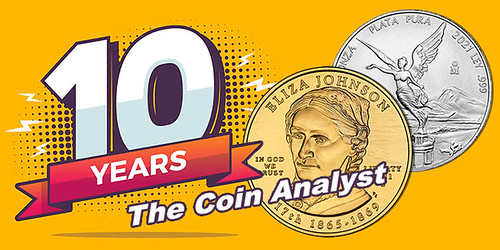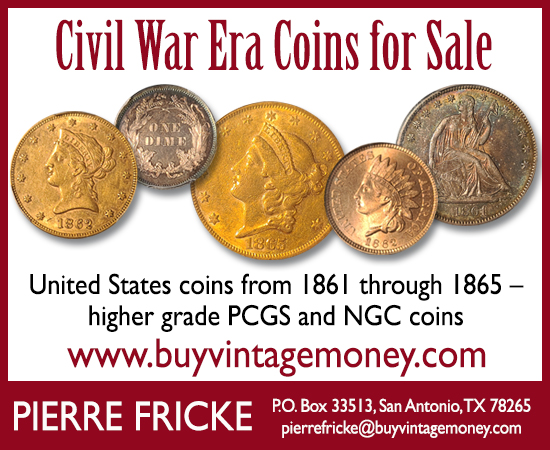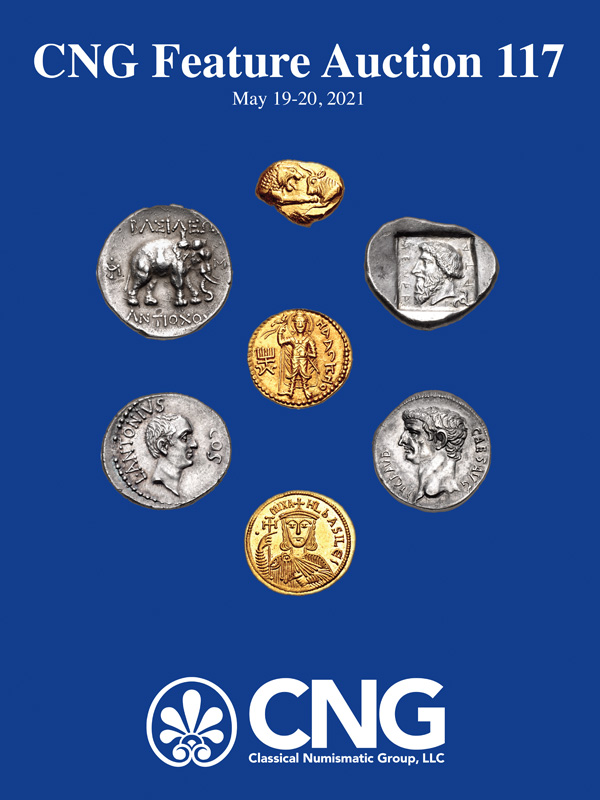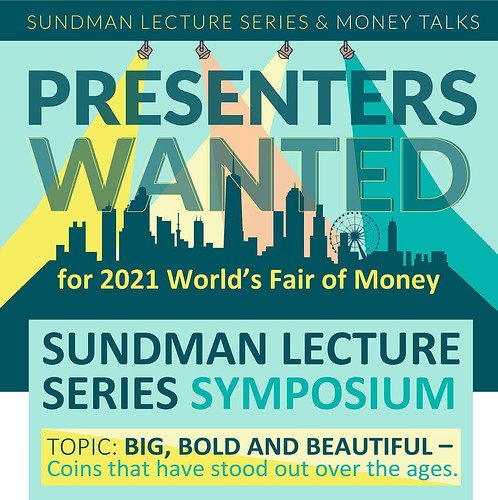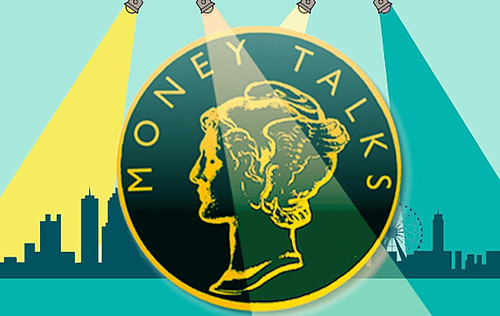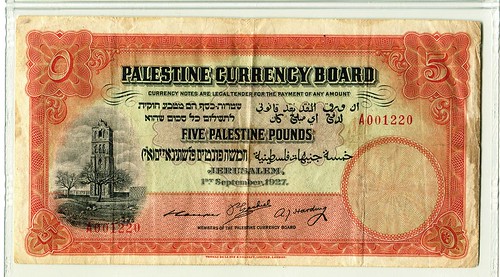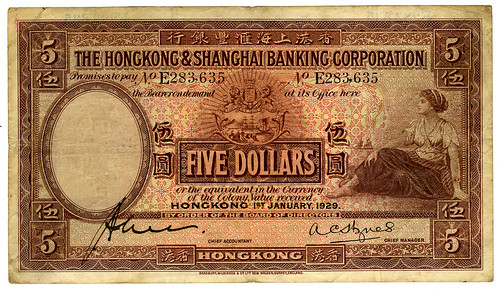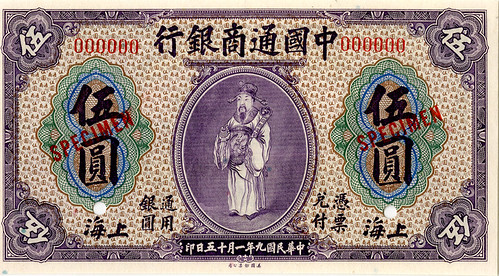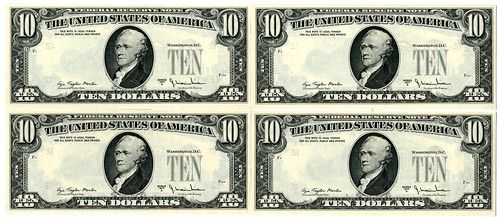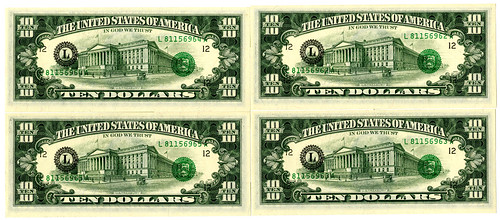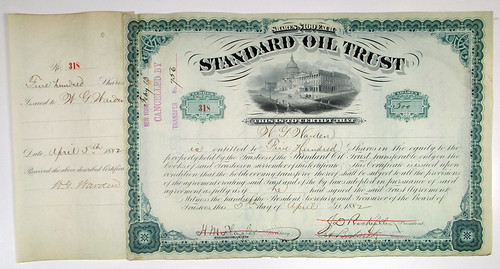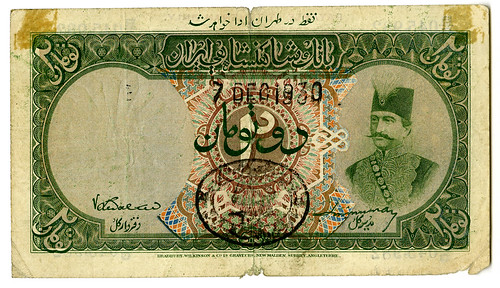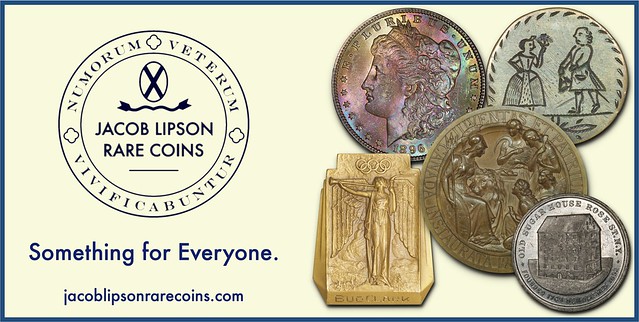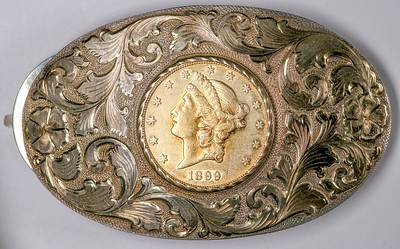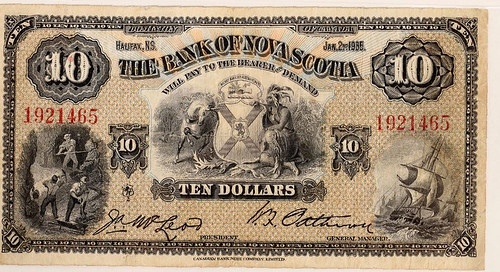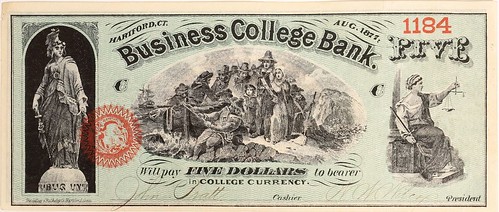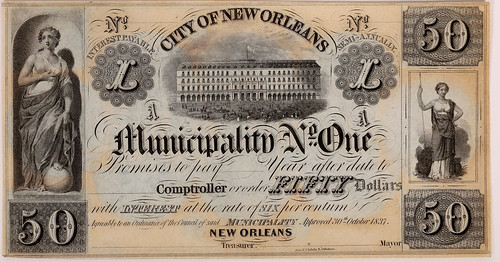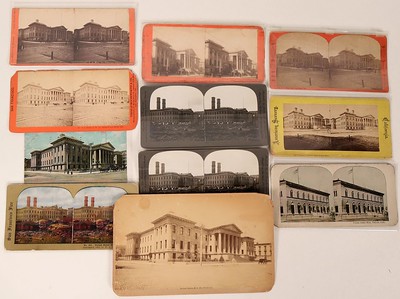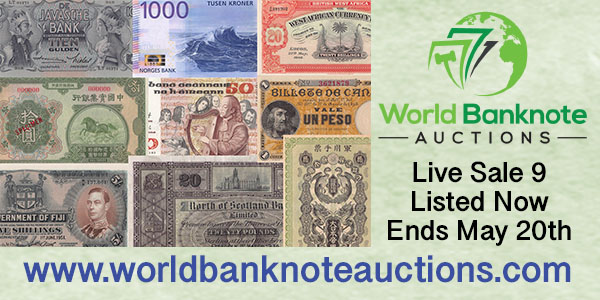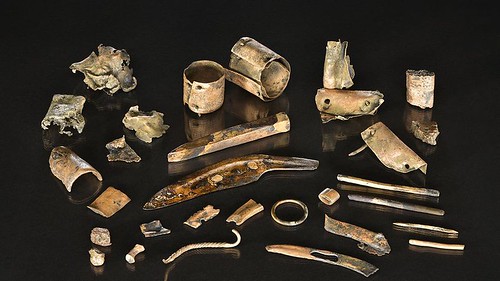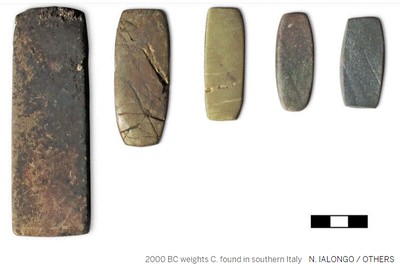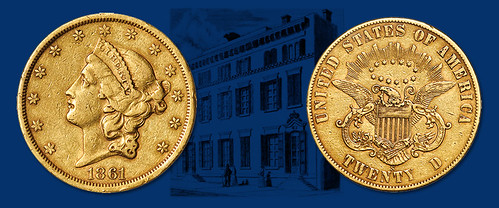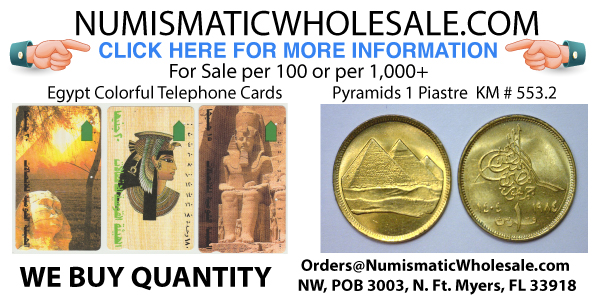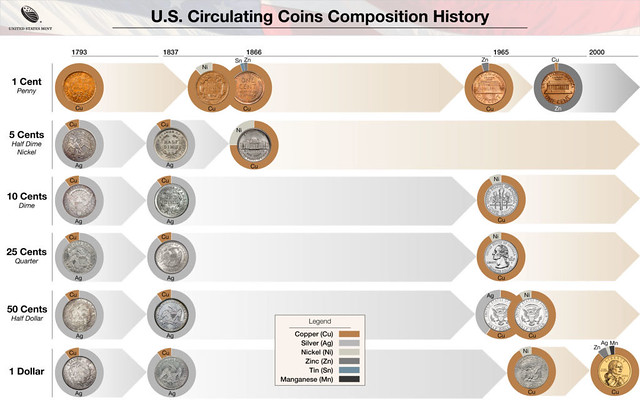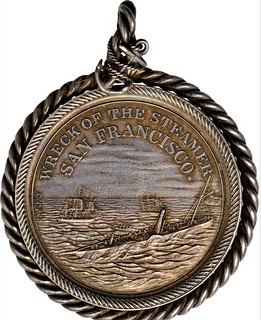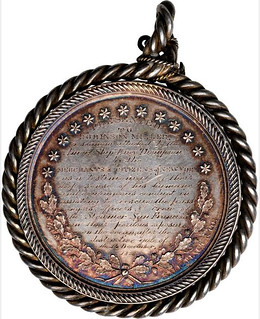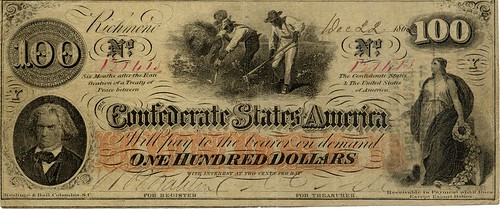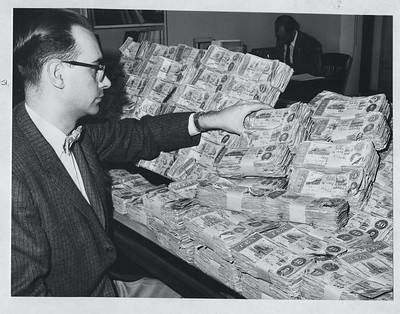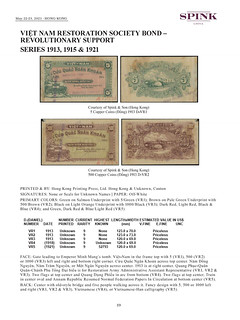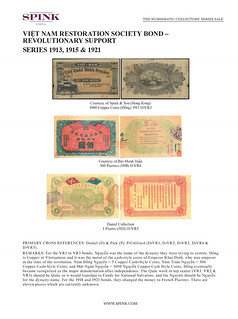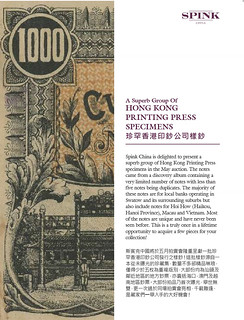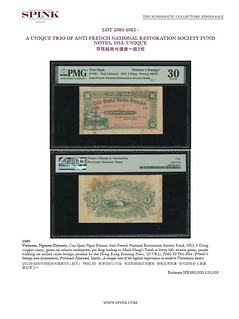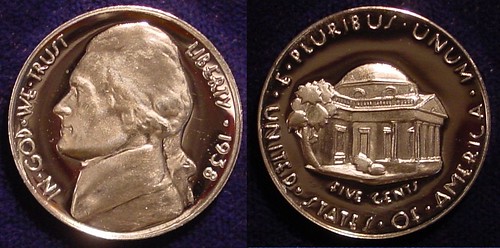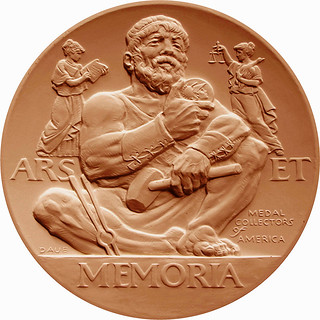
Visit our NBS Sponsors


About UsThe Numismatic Bibliomania Society is a non-profit association devoted to the study and enjoyment of numismatic literature. For more information please see our web site at coinbooks.org SubscriptionsThose wishing to become new E-Sylum subscribers (or wishing to Unsubscribe) can go to the following web page link MembershipThere is a membership application available on the web site Membership Application To join, print the application and return it with your check to the address printed on the application. Print/Digital membership is $40 to addresses in the U.S., and $60 elsewhere. A digital-only membership is available for $25. For those without web access, write to: Charles Heck, Treasurer AsylumFor Asylum mailing address changes and other membership questions, contact Chuck at this email address: treasurer@coinbooks.org SubmissionsTo submit items for publication in The E-Sylum, write to the Editor at this address: whomren@gmail.com BUY THE BOOK BEFORE THE COINSale Calendar |
- WAYNE'S WORDS: THE E-SYLUM MAY 9, 2021
- NBS BIBLIOTALK PODCAST WITH SHANNA SCHMIDT
- KOLBE & FANNING AUCTION SALE 160 HIGHLIGHTS
- NEW BOOK: WEST AFRICAN MANILLA CURRENCY
- NEW BOOK: CONGRESSIONAL GOLD MEDALS
- NEW BOOK: CHEMICAL AND PETROLEUM CURRENCY
- JOHN S. DYE AND HIS COUNTERFEIT DETECTORS
- VIDEO: QUEEN VICTORIA'S NUMISMATIC FAMILY TREE
- ANA TO DEACCESSION ITEMS ON EBAY
- THE JOURNAL OF NECROMANTIC NUMISMATICS
- NOTES FROM E-SYLUM READERS: MAY 9, 2021
- QUERY: GREENDUCK MOUSE AND TARZAN PIECE
- MORE ON INFLUENCE IN NUMISMATICS
- JEWISH-AMERICAN HALL OF FAME WEBSITE UPDATED
- BORCKARDT RECEIVES EAC'S SILBERMAN AWARD
- MICHAEL OLSON RECEIVES MINT DIRECTOR'S AWARD
- VOCABULARY TERM: DROP HAMMER PRESS
- MORE ON DAVID ULYSSES PROSKEY (1853-1928)
- HARVEY STACK'S NUMISMATIC FAMILY, PART 95
- THE COIN ANALYST: CELEBRATING 10 YEARS
- CHARLES I SHILLING AT MARYLAND COLONIAL FORT
- 2021 ANS COINAGE OF THE AMERICAS CONFERENCE
- 2021 ANA SUNDMAN AND MONEY TALKS SPEAKERS
- 2021 ANA WORLD'S FAIR OF MONEY CONFIRMED
- ARCHIVES INTERNATIONAL AUCTION 67
- MORE HOLABIRD MAY 2021 SALES SELECTIONS
- FOUNDATIONS OF THE FIRST MONETARY SYSTEM
- PAQUET 1861-S DOUBLE EAGLE OFFERED
- U.S. COIN COMPOSITION CHANGES
- 1854 RESCUE OF THE S.S. SAN FRANCISCO MEDAL
- CONFEDERATE MONEY AFTER THE CIVIL WAR
- VIETNAMESE PHAN BOI CHAU NOTES
- LOOSE CHANGE: MAY 9, 2021
- FEATURED WEB SITE: MEDAL COLLECTORS OF AMERICA
Click here to read the thin version on the web
Click here to subscribe
Click here to access the complete archive
To comment or submit articles, reply to whomren@gmail.com
Content presented in The E-Sylum is not necessarily researched or independently fact-checked, and views expressed do not necessarily represent those of the Numismatic Bibliomania Society.
WAYNE'S WORDS: THE E-SYLUM MAY 9, 2021
 New subscribers this week include:
Henry Nagtegaal of the Edmonton Numismatic Society, courtesy Dan Gosling and Wayne Jacobs;
Alvaro Rodriguez, also of the Edmonton Numismatic Society;
Michael Balwierczak, courtesy of Andy Singer; and
Alexander Lyzohub. Welcome aboard! We now have 6,639 subscribers.
New subscribers this week include:
Henry Nagtegaal of the Edmonton Numismatic Society, courtesy Dan Gosling and Wayne Jacobs;
Alvaro Rodriguez, also of the Edmonton Numismatic Society;
Michael Balwierczak, courtesy of Andy Singer; and
Alexander Lyzohub. Welcome aboard! We now have 6,639 subscribers.
Thank you for reading The E-Sylum. If you enjoy it, please send me the email addresses of friends you think may enjoy it as well and I'll send them a subscription. Contact me at whomren@gmail.com anytime regarding your subscription, or questions, comments or suggestions about our content.
This week we open with a new NBS podcast, four new books, and plans to deaccession material from the ANA Museum and Library.
Other topics this week include the Journal of Necromantic Numismatics, the Greenduck Company, the Jewish-American Hall of Fame, the drop hammer press, ANS and ANA speaking opportunities, auction previews, the Paquet 1861-S Double Eagle, and the Medal Collectors of America.
To learn more about the Boeing & Bridgman collections, West African Manilla currency, Congressional Gold Medals, the Robert J. Bauman Collection, John S. Dye and his counterfeit detectors, The Banknote Book, influence in numismatics, Mark Borckardt, Michael Olson, David Proskey, Richard Picker, Louis Golino, the Victor D. Brenner sesquicentennial, the Imperial Bank of Persia, the bronze age origins of the first monetary system, U.S. circulating coin compositions, the rescue of the S.S. San Francisco, secret society medals, and Barnumesque humbugging, read on. Have a great week, everyone!
Wayne Homren
Editor, The E-Sylum
NBS BIBLIOTALK PODCAST WITH SHANNA SCHMIDT
The latest episode of the Numismatic Bibliomania Society podcast is now available for listening. It's on the NBS web site but also available elsewhere. Vice-President/Secretary Len Augsburger provided this report. -Editor
NBS Podcast Features Shanna Schmidt
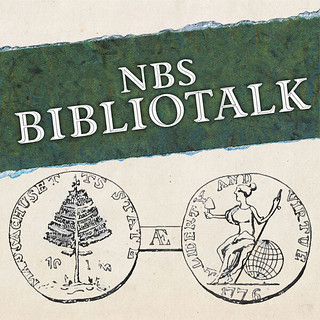 The latest episode of the NBS podcast Bibliotalk is now available. Producer Lianna Spurrier interviews ancient coin dealer and ANA Governor Shanna Schmidt on the subject of ancient numismatics and the related literature. Shanna discusses the challenges of building a library from scratch, and the relationship between print and digital resources.
The latest episode of the NBS podcast Bibliotalk is now available. Producer Lianna Spurrier interviews ancient coin dealer and ANA Governor Shanna Schmidt on the subject of ancient numismatics and the related literature. Shanna discusses the challenges of building a library from scratch, and the relationship between print and digital resources.
The interview further covers recommendations for forming a library related to ancient numismatics, and compares various aspects of collecting ancient coins vs. collecting U.S. coins. Schmidt is a dealer in the Chicago area who is active in auction representation, especially in European sales, in addition to offering coins at fixed prices.
Link to Ancient Coins and Their Books, with Shanna Schmidt
podcast on the NBS home page:
https://www.coinbooks.org/resources/podcast.html
Link to Shanna Schmidt home page:
https://www.shannaschmidt.com/
Link to archived editions of Shanna Schmidt's newsletter:
https://nnp.wustl.edu/library/publisherdetail/518823
KOLBE & FANNING AUCTION SALE 160 HIGHLIGHTS
Here are some more highlights of the Kolbe & Fanning sale announced last week. -Editor
May 22 Book Auction Highlights
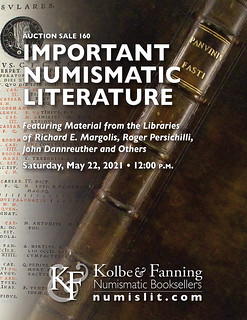 Kolbe & Fanning Numismatic Booksellers are holding our Sale 160 on Saturday, May 22, 2021. The 459-lot auction features additional material from the library of Richard Margolis, along with properties belonging to several other consignors. Offered within are books, catalogues and periodicals covering a variety of numismatic topics, including standard current works, antiquarian volumes, rare plated catalogues, and much else.
Kolbe & Fanning Numismatic Booksellers are holding our Sale 160 on Saturday, May 22, 2021. The 459-lot auction features additional material from the library of Richard Margolis, along with properties belonging to several other consignors. Offered within are books, catalogues and periodicals covering a variety of numismatic topics, including standard current works, antiquarian volumes, rare plated catalogues, and much else.
Some highlights of the sale include:
Lot 47: a bound volume reproducing the photographic record of the Charles Gillet collection of outstanding ancient Greek coins
Lot 84: a complete set of Mitchiner's encyclopedic Oriental Coins and Their Values
Lot 97: Jozef Ratinckx's very scarce study of the art of Roman coins, De romeinsche munt beschouwd als kunstvoortbrengsel...
Lot 125: a complete set of the sixteen fascicles published thus far of the Sylloge Nummorum Graecorum Munich series
Lot 195: all nine volumes of John Davenport's important series on world crowns and talers
Lot 361: S.H. & H. Chapman's 1891 catalogue of the Boeing & Bridgman collections, illustrated with 4 fine photographic plates
Lot 339: Abe Kosoff's heavily annotated copy of Adams & Woodin on U.S. patterns, recording coins in the Woodin, Newcomer, Green and Boyd collections
Lot 375: a large-paper copy of John Durand's exceptionally illustrated 1894 study of his father's work, The Life and Times of A.B. Durand
Lot 395: F.C.C. Boyd's set of the Special Collected Hardbound Edition of Abe Kosoff's first 28 auction catalogues.
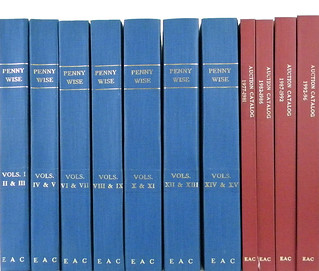 Lot 376: an attractively bound complete set (through 2005) of the Early American Coppers publication Penny-Wise, with bound copies of the club's auctions catalogues from 1977 to 2000
Lot 376: an attractively bound complete set (through 2005) of the Early American Coppers publication Penny-Wise, with bound copies of the club's auctions catalogues from 1977 to 2000
Register early to bid online
Bids may be placed via post, email, fax or phone, as well as online. Kolbe & Fanning use Auction Mobility as our third-party online bidding platform. Auction Mobility is an app-based platform allowing users the ability to participate in the sale through phones, tablets and computers. To register for the sale, bidders must go to
bid.numislit.com and sign up. Once you have set up an account, you may browse lots, place advance bids, or participate in the live sale online. Those wishing to participate on their devices can download the Kolbe & Fanning app through the Apple or Google Play Store.
The printed catalogue of Sale 160 will be mailed to all active customers on our mailing list shortly. As international mail speeds remain somewhat slowed by the Corona situation, we encourage our international clients to consult the electronic catalogue in case their printed catalogue does not arrive promptly. A PDF of the printed catalogue has been posted to our main website at numislit.com for those who prefer that format. Bids placed via post, email, fax or phone must be received by May 21, the day before the sale, in order for them to be processed. Advance absentee bids may also be placed at any time online at bid.numislit.com. Live internet bidding will be available during the sale itself through the same platform. The sale will also be listed on Biddr and NumisBids in the near future.
Kolbe & Fanning Numismatic Booksellers LLC is a licensed and bonded auction firm in the State of Ohio. For more information, please see the Kolbe & Fanning website at numislit.com or email David Fanning at df@numislit.com. To register for the sale, go to bid.numislit.com. We look forward to your participation.
To read the earlier E-Sylum article, see:
KOLBE & FANNING AUCTION SALE 160 ANNOUNCED
(https://www.coinbooks.org/v24/esylum_v24n18a02.html)
NEW BOOK: WEST AFRICAN MANILLA CURRENCY
A CoinsWeekly article by Ursula Kampmann alerted me to a new book in English on the West African Manilla money. Here's information from the publisher's website. -Editor
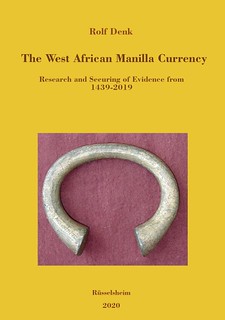 The West African Manilla Currency
The West African Manilla Currency
Research and Securing of Evidence from 1439-2019
Rolf Denk
Hardcover
€ 35.00
VAT included.
Number of pages: 292
ISBN: 978-3-347-01539-5
Size: 20.0 cm x 28.0 cm
Release date: 04/11/2020
Prof Dr Rolf Denk, born in Düsseldorf in 1935, worked as a dermatologist in the Mainz University Hospital and afterwards in his own specialist practice in Rüsselsheim. In 1978 he and other collectors were among the founders of the European Union to Search for, Collect, and Preserve Primitive and Curious Money (EUCOPRIMO). In 1981 he took over the editing of the journal Der Primitivgeldsammler. After completing his medical career, he devoted himself more to the research of early indigenous means of payment. 110 own publications have appeared on this topic. In 2017 he published the monograph "Das Manillen–Geld West Afrikas" of which he now presents a revised and extended edition in English.
The currency manillas discussed in this book are open metal rings that were used by Europeans as means of payment in trade with the local population from the mid–15th to mid–20th century in various areas of the West Coast of Africa. All currency manillas were made in Europe and are not indigenous products. Therefore is not correct and misleading to designate the foot, arm and neck rings produced in the country itself as manillas.
The early Portuguese manillas, also called tacoais, were largely produced according to Portuguese specifications in Flanders and Germany. They are heavier and larger than the so-called Birmingham manillas, which originated in England and were mainly exported to southern Nigeria, where they were in circulation as market money with the Igbo and Ibibo. An intermediate position in terms of shape, weight and metal composition is occupied by the popo manillas, probably produced in England and France and mainly used in the Ivory Coast.
On the basis of extensive literature research, an attempt is made to obtain more precise data on the production, use and typification of the different currency manillas and to show their clear distinction from the indigenous metal rings.
For more information, or to order, see:
The West African Manilla Currency
(https://tredition.de/autoren/rolf-denk-30451/the-west-african-manilla-currency-hardcover-128248/)
To read the CoinsWeekly article, see:
The West African Manilla Currency
(https://coinsweekly.com/the-west-african-manilla-currency/)
NEW BOOK: CONGRESSIONAL GOLD MEDALS
Heath MacAlpine advises us of the April 8th issuance of the latest edition of Congressional Gold Medals: Background, Legislative Process, and Issues for Congress, updated by Jacob R. Strauss of the Congressional Research Service of the Library of Congress. The report is aimed at giving members of Congress background information on the history of the Congressional Gold Medal as well as guidance regarding the legislative process required to issue one,
says MacAlpine. In the absence of a current, comprehensive reference on the CGM series it's also a useful tool for medal collectors, providing an up to date list of all issues that have been authorized.
Here's a short excerpt. See the complete report online for more information.
-Editor
Introduction
Since the late 1700s, Congress has expressed public gratitude to individuals and groups by awarding medals and other similar decorations. The first Congressional Gold Medals were awarded by the Continental Congress. Since that time, Congress has awarded gold medals to express public gratitude for distinguished contributions, dramatize the virtues of patriotism, and perpetuate the remembrance of great events. This tradition of authorizing individually struck gold medals bearing the portraits or actions of honorees is rich with history.
Although Congress has approved legislation stipulating specific requirements for numerous other awards and decorations, there are no permanent statutory provisions specifically relating to the creation of Congressional Gold Medals. When Congress has determined that such an award is appropriate, it has, by special action, provided for the creation of a personalized medal to be given in the name of Congress.
Early Practices
The Continental Congress authorized the first Congressional Gold Medals. As initially conceived,
Congressional Gold Medals were awards imbued with the conviction that only the very highest
achievements [were] entitled to such a distinction, and that the value of a reward is enhanced by
its rarity!
At that time, the Continental Congress concluded there was no better way to honor
and preserve the memory of illustrious characters and splendid events than medals—whether we
take into consideration the imperishable nature of the substance whence they are formed, the
facility of multiplying copies, or the practice of depositing them in the cabinets of the curious.
The first gold medals were struck in Paris under the direction of Colonel David Humphrey.
Following a long-standing historical practice, Congress commissioned gold medals as tributes for
what were considered to be the most distinguished achievements. Silver and bronze medals, and
ceremonial swords, were awarded for less eminent, but still notable, accomplishments. However,
only the gold medal has been continuously awarded to the present day.
The first Congressional Gold Medal was authorized on March 25, 1776, for George Washington,
then commander of the Continental Army, for his wise and spirited conduct
in bringing about British evacuation of Boston. During the next 12 years, the Continental Congress authorized an
additional six gold medals for Revolutionary military leaders.
To read the complete report, see:
Congressional Gold Medals: Background,
Legislative Process, and Issues for Congress
(https://fas.org/sgp/crs/misc/R45101.pdf)
NEW BOOK: CHEMICAL AND PETROLEUM CURRENCY
Last week we discussed digital images of paper money items related to the chemical and petroleum industry from the Robert J. Bauman Collection at the Science History Institute. Curator Patrick Shea writes: "The digitized content of the Bauman Collection is only a small sample of the much larger collection. The full finding aid to that with images and descriptions of every piece in the collection can be downloaded from the catalog record".
The Finding Aid is basically a 350-page illustrated catalog of the collection. Here's the Appendix which describes the collection. -Editor
About the collection
Robert Bauman, President of Polymer Consulting International, started collecting world paper money in 1980 when he joined the consulting firm of Chem Systems and started to travel internationally. The chemical and petroleum collection started around 1990 when he found some paper money from BASF and Bayer. Many of these are readily available to collectors, due to the large number that were issued.
Most of the issues are from chemical companies. Very few petroleum companies issued coins or banknotes for use in their own facilities. However, some issued promotional currency which became an adjunct to the collection.
As the research progressed and as multiple sources were used to acquire more coins and banknotes, some contemporary postcards that showed the plants that issued the money were obtained. Most show the plants at, or before, the time when they issued the money. This became another objective of the collection sort of putting a face to the name
. The search for new coins and banknotes sometimes resulted in finding some commemorative medals honoring a milestone (e.g., fiftieth anniversary), the company's founders or someone that greatly contributed to the company's success.
The most interesting aspect of collecting currency from the chemical industry was the discovery of chemical companies that made great contributions to the development and growth of the chemical industry, particularly in Germany, that are no longer in existence. They either closed, or more often, were acquired by one of the major chemical companies still operating today. Some of these companies that no longer operate under their original names include: de Haen, Th. Goldschmidt, Grasselli, Griesheim, Harkortsche, and Wolff & Co. Some of the acquiring companies include Dow, DuPont, Evonik and Hoechst.
Some of the research is incomplete due to the limited information available on the web. Moreover, much of the information on French and German companies were only available in French or German which complicated the research. As such, if anyone has any additional information on these companies or has any corrections, please send them to: rbauman@polymerconsulting.net
The collection, which contains more than 450 items collected over a thirty-year period, represents some interesting aspects of the history of the chemical and petroleum industry.
If you have any items not included in the collection and wish to donate them to the Science History Institute, you can contact Patrick Shea, Chief Curator of Archives and Manuscripts.
To read the complete Finding Aid online, see:
Currency of the Chemical and Petroleum Industries
(https://othmerlib.sciencehistory.org/articles/1085876.15191/1.PDF)
To read the earlier E-Sylum article, see:
BAUMAN COLLECTION OF CHEMICAL CURRENCY
(https://www.coinbooks.org/v24/esylum_v24n18a32.html)
JOHN S. DYE AND HIS COUNTERFEIT DETECTORS
The latest addition to the Newman Numismatic Portal is a book on John S. Dye and his counterfeit detectors. Project Coordinator Len Augsburger provided the following report. -Editor
John S. Dye and His Counterfeit Detectors
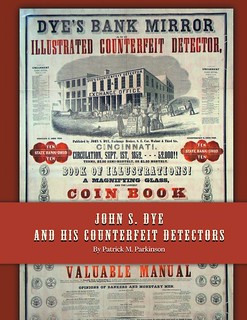 Recently published on Newman Portal is Patrick Parkinson's work John S. Dye and His Counterfeit Detectors. This study documents the history of John S. Dye's counterfeit detectors, a task made difficult by the ephemeral nature of such publications. Because new counterfeits and new genuine bank notes were constantly being circulated, counterfeit detectors quickly became outdated and were discarded, leaving very few surviving copies. This book fills in the gaps, largely through advertisements and articles in digital databases of contemporary newspapers. Parkinson's work is meticulous and will be welcome by anyone interested in 19th century counterfeit detectors.
Recently published on Newman Portal is Patrick Parkinson's work John S. Dye and His Counterfeit Detectors. This study documents the history of John S. Dye's counterfeit detectors, a task made difficult by the ephemeral nature of such publications. Because new counterfeits and new genuine bank notes were constantly being circulated, counterfeit detectors quickly became outdated and were discarded, leaving very few surviving copies. This book fills in the gaps, largely through advertisements and articles in digital databases of contemporary newspapers. Parkinson's work is meticulous and will be welcome by anyone interested in 19th century counterfeit detectors.
Lianna Spurrier performed book design, graphics, and layout of Parkinson's work under sponsorship of Newman Portal. The result is an elegant presentation, with visual appeal matched only by the content. Newman Portal welcomes inquiries by prospective authors in need of the same services, and currently has similar projects in production, which will be announced in due course.
Link to John S. Dye and His Counterfeit Detectors on Newman Portal::
https://nnp.wustl.edu/library/book/599152
A welcome and long-overdue book! Congratulations to all involved, and many thanks to Patrick for undertaking the research. Dye's works are at once rare and ubiquitous; published over many years and common in their day yet individually quite rare now. Dye was a colorful figure and the book provides a good overview of his interesting life.
Separately from the NNP project, Patrick has made the book available on Amazon for purchase in softcopy format. I ordered one earlier this week and it quickly arrived. These are a print-on-demand product costing only $20. The production quality is good. I noticed at the back of my copy the notation "Made in the U.S.A. / Middletown, DE / 04 May 2021". So these books have a born-on date similar in a way to the "No. 4 of 200" numbering many publishers use, except there's no upper (or lower) limit on the edition. Will these printing dates be significant to bibliophiles of the future?
Here's some more information from the Amazon page. -Editor
Dye first published a counterfeit detector in Cincinnati in 1850. Over the rest of his life, at various times and in various places, he published at least four other counterfeit detectors, a bank note reporter, and a book on notorious counterfeiters. After Dye's death in 1881, others completed a coin encyclopedia he had nearly completed and continued to publish a counterfeit detector bearing his name until 1910.
The book also tells the story of Dye's colorful life. There was much more to John S. Dye than his counterfeit detectors. As was often the case for publishers of counterfeit detectors, he was a dealer in bank notes and a banker. But that was far from all. Throughout his life he supported and advocated radical political, social, and religious ideas and movements, including a Workingman's Party, extreme conspiracy theories regarding multiple antebellum assassinations of U.S. Presidents by southern, slaveholding politicians, Spiritualism, and perhaps even free love. The book confirms that in the 1860s and 1870s he assumed the names John Smith Dye and Deacon Dye and published several books to support Republican presidential candidates and to espouse strange theories on the origins and history of man.
Beginning with some celebrated lectures on counterfeiting in 1855, Dye was a popular lecturer and a showman on a variety of subjects, and some of his performances in the 1870s indulged his penchant for showmanship to the point of Barnumesque humbugging of his audiences. For a brief period (1869-1870), Dye drew on his knowledge of counterfeiting to serve as an operative of the U.S. Secret Service.
Language : English
Paperback : 75 pages
ISBN-13 : 979-8735205906
Item Weight : 9 ounces
Dimensions : 8.5 x 0.18 x 11 inches
For more information, or to order, see:
John S. Dye and His Counterfeit Detectors Paperback – May 1, 2021
(https://www.amazon.com/dp/B093RLBRX8)
VIDEO: QUEEN VICTORIA'S NUMISMATIC FAMILY TREE
These are selections from the David Lisot Video Library that feature news and personalities from the world of coin collecting. David has been attending coin conventions since 1972 and began videotaping in 1985. The Newman Numismatic Portal now lists all David's videos on their website at:
https://nnp.wustl.edu/library/multimediadetail/522852
Here's one on Queen Victoria's Numismatic Family Tree. -Editor
Queen Victoria's Numismatic Family Tree
American Numismatic Association Convention, Milwaukee, 2007.
Speaker: James Wells
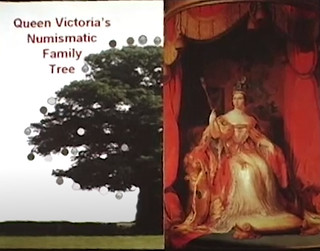 James Wells collected mainly American coins for decades, but became fascinated with the interconnection of European royalty and the coins that depict them. He has written for "Numismatist" and the "California Numismatist" as well authored a five-part series on Queen Victoria that appeared in "World Coin News" in 2004-2005. In this video lecture with PowerPoint you will see and learn:
James Wells collected mainly American coins for decades, but became fascinated with the interconnection of European royalty and the coins that depict them. He has written for "Numismatist" and the "California Numismatist" as well authored a five-part series on Queen Victoria that appeared in "World Coin News" in 2004-2005. In this video lecture with PowerPoint you will see and learn:
- lineage from which Victoria came to become Queen
- coins of Victoria in Great Britain and the five different portraits used
- coins and portraits from the 18 different countries on which she also appeared
- her 9 children and their marriages and the coins on which they appeared
- the 76 different countries on whose coins her children, siblings and in-laws appeared
- Elizabeth II who has appeared on more coins than anyone in history
The video is available for viewing on NNP at:
https://nnp.wustl.edu/library/book/557270
ANA TO DEACCESSION ITEMS ON EBAY
The American Numismatic Association is joining the American Numismatic Society with numismatic item sales on eBay, to include duplicate numismatic literature from the Dwight N. Manley Numismatic Library and redundant items from the Edward C. Rochette Money Museum. Here's the press release. -Editor
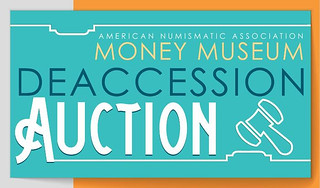 The Money Museum operated by the nonprofit American Numismatic Association in Colorado Springs, Colo., announced that it will soon be selling – or deaccessioning, as the practice is known – select items from its collection that are redundant, mostly low-value specimens already well represented. The sales will be conducted on eBay and are anticipated to begin in June.
The Money Museum operated by the nonprofit American Numismatic Association in Colorado Springs, Colo., announced that it will soon be selling – or deaccessioning, as the practice is known – select items from its collection that are redundant, mostly low-value specimens already well represented. The sales will be conducted on eBay and are anticipated to begin in June.
No specimens from the Money Museum's permanent collection will be sold.
The auctions will focus on world coins, paper money, tokens and medals, though a few American duplicate coins, mint sets and numerous stock certificates also will be included. The auction project will eventually expand to duplicate books and catalogs from the ANA Library and ANA-
The American Numismatic Association's collection, formed originally in 1928, was stored with the Curator of Numismatics at the Smithsonian Institution until 1966, when the ANA located its headquarters in Colorado Springs, creating the permanent home for the collection and allowing for the establishment of the Money Museum. Since that time, the collection has grown to encompass hundreds of thousands of objects, many of which are multiple duplicates of those needed to meet the Museum's educational mission.
According to Money Museum Curator and Director Doug Mudd, only duplicates are being considered for deaccession. This will allow the ANA to clear space for future objects, while the revenue generated will help support our ongoing mission of promoting and advancing the hobby of numismatics,
says Mudd.
We believe that the fairest method to sell our duplicate specimens is through open auctions with the widest possible reach,
Mudd explains. To meet that goal, we have chosen eBay to be our primary vehicle for selling the deaccessioned material. eBay not only has an expansive online auction platform, but its low overhead costs and administrative features will streamline the day-to-day logistics of running auctions.
The eBay auctions will allow for low starting bids and no reserves to ensure that collectors of all means have an opportunity to obtain objects from the Money Museum collection. According to Mudd, this ensures that, as a nonprofit, we are approaching the project with transparency and fairness. Ultimately, the market alone will dictate the final price of any object.
ANA members will be able to acquire deaccessioned objects at a discounted price as a benefit of membership.
According to Mudd, the deaccession auction project is expected to launch in June and will be a work-in-progress for the next several years. Ultimately, we are doing what is right for our members and our collection,
he says.
To read the earlier E-Sylum articles, see:
ANS LIBRARY DUPLICATES AVAILABLE ON EBAY
(https://www.coinbooks.org/v24/esylum_v24n05a02.html)
ANS BULLOWA LIBRARY DUPLICATES OFFERED
(https://www.coinbooks.org/v24/esylum_v24n09a03.html)
THE JOURNAL OF NECROMANTIC NUMISMATICS
As part of last week's article on Paul Courville's book on Magic Tokens I learned about The Journal of Necromantic Numismatics. Paul kindly provided this additional background. Thank you! -Editor
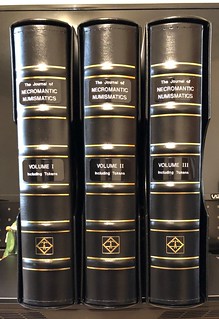 The Journal of Necromantic Numismatics (JNN) was a newsletter of sorts that was subscription based, but not in the conventional sense of subscription. In order to receive a copy you were invited to submit a ONE page article towards the creation of that issue, no article... no issue. This was devised by Bill Kuethe and was intended to be a quarterly produced item.
The Journal of Necromantic Numismatics (JNN) was a newsletter of sorts that was subscription based, but not in the conventional sense of subscription. In order to receive a copy you were invited to submit a ONE page article towards the creation of that issue, no article... no issue. This was devised by Bill Kuethe and was intended to be a quarterly produced item.
The first year only three issues were released (growing period) then it settled into quarterly for the next 4 years. then in the 6th year 2 issues were produced and then only one issue each of the next 6 years that followed. Bill would get the articles mailed to him. He would make copies of all the articles, add a front and back cover, staple all the pages together and then mail the copies to each of the contributing "subscribers". There are only a microscopic number of complete files in existence due to Kuethe's novel distribution model for the journal.
Only one person that I am aware of has the entire 32 issues besides myself and that set is Bill Kuethe's personal copies that are in The International Museum and Library of the Conjuring Arts, which is in Las Vegas and owned by David Copperfield.
I removed the 50+ year old staples from my issues in order to be able to properly scan them all and when I finished I didn't want to attempt to slide staples through the original holes so each of the 482 pages are in top load document protectors and stored in the leather binders (with box sleeves) that I made to store them in.
A LOT of the original pages were extremely unclear since they were created in Bill's house using a 1960's copy machine which was definitely NOT made by Xerox. I thought that sharing unreadable documents would not be useful so I cleaned the pages up the best I could (I AM NOT a graphic designer nor clerk typist) and that's how I posted them to my website.
Here's a little side by side comparison of a page before and after I made my edits.
I put my set together by making trades and purchases of a couple of issues here and a few there and 12 were previously in the Leslie Cole collection that was purchased by David Copperfield and I traded magic tokens that he didn't have in his collection for the issues since he already has the Kuethe complete file. That trade involved a LOT of tokens...
I've checked with other contributing subscribers to the JNN but none of them have a complete file set and none of them are willing to part with the issues that they do have.
To read the journal online at Paul's site, click on the issue covers here: http://www.magictoken.org/JNN.html . -Editor
To read the earlier E-Sylum article, see:
NEW BOOK: MAGIC TOKENS
(https://www.coinbooks.org/v24/esylum_v24n18a04.html)
NOTES FROM E-SYLUM READERS: MAY 9, 2021
Whitehead & Hoag Piece NOT a Magic Token
Magic Tokens book author Paul Courville also responded on that mysterious Whitehead & Hoag token some thought might be a magic piece. Thanks! The best thing about The E-Sylum is getting answers directly from people in a position to know. -Editor
Paul writes:
"The Fortuna item and about 30 others are NON-magic related items that I frequently get asked about. As Jud Petrie replied in the article, there are many collectors who have one or many unauthenticated items within their collections but they are in no way found to have any association to magic in any way but they have "that look" to them... I have a few of them in my junk token box because they were in the collections of Raymond Goulet, James Eastman and Micky Hades which I purchased over the years."
Paul also notes:
"My book is still in print and I updated its content just last week. It is available via Amazon, but then again... It's FREE on my website and the PDF version is searchable for quick searches."
To access the book online, see:
http://www.magictoken.org/magic/guide.html
To read the earlier E-Sylum articles, see:
A MYSTERIOUS WHITEHEAD & HOAG TOKEN
(https://www.coinbooks.org/v24/esylum_v24n15a07.html)
THE MYSTERIOUS WHITEHEAD & HOAG TOKEN
(https://www.coinbooks.org/v24/esylum_v24n16a11.html)
NEW BOOK: MAGIC TOKENS
(https://www.coinbooks.org/v24/esylum_v24n18a04.html)
10th Anniversary of The Banknote Book
In an email to subscribers this week, publisher Owen Linzmayer writes:
"After many years of preparation, ten years ago this week I began publishing The Banknote Book with an initial release of 10 chapters. Since then, the catalog has swelled to 298 chapters, with a total of 7,388 pages covering 71,015 types and varieties.
I'd like to thank everyone who has helped reach this milestone, especially my co-author collaborators and the many subscribers and contributors who've spent countless hours scanning their collections, sharing information, and reviewing drafts to ensure the catalog is as accurate as possible."
Congratulations on reaching this milestone! Writer Louis Golino recently reached a 10-year milestone as well - see the article elsewhere in this issue. -Editor
For more information, see:
https://banknotenews.com/?page_id=18835
Tony Terranova writes:
"That Maria Teresa "box/locket" is a double miniature picture frame, meant to stand up on its balled feet at a partially closed angle."
Ken Spindler of San Diego writes:
"Regarding the "Maria Theresa Thaler Opium Box" in the Holabird auction, I own the exact same thing, but never considered the possibility that it might have been an opium or anything else intended-to-be-concealed holder, even though I collect substance abuse-related numismatica and own a few silver and copper "convict box" pieces.
"It is free standing, on those little feet. I've been using mine as a picture frame, which is what I always thought it was intended to be in the first place. In mine I fitted nice round color portraits of French King Louis XVI and Queen Marie Antoinette (Austrian Archduchess Maria Theresa's youngest daughter), as an adjunct to my French Revolution numismatic stuff collection. I display it in my china cabinet, open, inside a small lucite cube-box to keep out the dust. "
Thanks, everyone. Above is the item in the Holabird sale; below are the images Ken sent of his example. Nice! -Editor
To read the earlier E-Sylum article, see:
SELECTIONS FROM HOLABIRD MAY 2021 SALES : Lot 3376: Maria Theresa Box Thaler
(https://www.coinbooks.org/v24/esylum_v24n18a24.html)
Tony Terranova writes:
"That Mott token was "spooned", at first glance. Open to debate."
Tom DeLorey writes:
"I agree that Bob Rhue's Mott Token was reduced in diameter after it was struck, though I would like to see it in hand before I could speculate as to how that was done.
"However, there seems to be a typographical error in the diameters given for this piece and normal pieces. I believe that 20 mm was somehow subtracted from each figure."
Later Tom added:
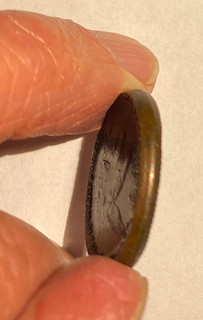 "I got to examine Bob Rhue's unusual Mott Token at the Denver Coin Show. The disruption to the edge inscriptions on both side were caused by the struck token being run through an upsetting mill with severely angled sides to the channels. I would guess that the two angled sides are at roughly a 90 degree angle.
"I got to examine Bob Rhue's unusual Mott Token at the Denver Coin Show. The disruption to the edge inscriptions on both side were caused by the struck token being run through an upsetting mill with severely angled sides to the channels. I would guess that the two angled sides are at roughly a 90 degree angle.
"The texture of the re-upset edge is a bit coarse. My best educated guess is that it was made contemporary to the striking of the token (whenever that was). It is quite possible that this happened at the same shop where the token was struck at or very close to the same time. There is no indication that the piece circulated either before or after the re-upsetting.
"Could any of your noble readers provide a picture or two of the edge of a high-grade Mott? It has been a while since I handled one, and I never bothered to study the edge."
Thanks! Neat piece. -Editor
To read the earlier E-Sylum article, see:
NOTES FROM E-SYLUM READERS: MAY 2, 2021 : Query: An Unusual Mott Token
(https://www.coinbooks.org/v24/esylum_v24n18a13.html)
Dennis Hengeveld of World Banknote Auctions writes:
"Regarding the spurious Portuguese 500 Escudos ordered by Alves Reis at Waterlow & Sons: These notes cannot always be identified by serial number (although some prefixes are always spurious). The serial numbers are in some cases identical between genuine and spurious notes. For example, the British Museum has a pair on display, one genuine and one counterfeit, with the exact same prefix and serial number.
"There were 200,000 fraudulent notes printed and in certain cases these fraudulent notes can be identified, but the methods in doing so are not widely published and involve plate letters located in extremely small font on the notes (usually impossible to see in scans) and other (somewhat disputed) characteristics. Even in hand, however, in some instances it is impossible to distinguish between genuine and fraudulent."
Thank you. I shouldn't have assumed that the serial numbers were the only diagnostic. -Editor
To read the earlier E-Sylum article, see:
1922 BANK OF PORTUGAL 500 ESCUDOS NOTE
(https://www.coinbooks.org/v24/esylum_v24n18a33.html)
QUERY: GREENDUCK MOUSE AND TARZAN PIECE
Dick Johnson's widow Shirley writes:
"A very interesting piece of Greenduck has just turned up. I wonder if anyone has seen it before. They certainly look like the old Mickey Mouse and Tarzan (maybe)."
The item was submitted by Dave Taber of Charlotte, Michigan via Shirley. Can anyone tell us more about it? A Tarzan fan club souvenir, perhaps? Ever wondered where the company's name came from? Here's an excerpt from Dick's encyclopedia. -Editor
Greenduck Company manufacturing firm, Chicago; relocated
Hernando, Mississippi 1962.
Also Green Duck Company [two words], Green Duck Metal
Stamping Company; Green Duck Corporation 1962-2004.
Founded 1906 by two partners, George G. Greenburg (formerly with Childs & Company) and Harvey Ducgheisel, choosing the name Greenduck as the first syllable of these two men's last names, intending it to be one word. However so many people used it as two words, it was adopted as two words by the company as well (date unknown). Firm produced wide assortment of metal stamped products, often lithographed in color on thin metal. An advertisement in 1930s listed four dozen different including campaign buttons, tabs, key tags, label buttons, and such in small size up to Illinois state license plates.
A large group of the firm's archives was sold in a Hake's Americana & Collectibles auction 19-21 January 2010.
MORE ON INFLUENCE IN NUMISMATICS
Pete Smith's review of the Coin World list of The Most Influential People in Numismatics brought forth a number of comments. I was unsure initially of how to handle this, hoping to avoid the rabbit-hole of directly or indirectly criticizing the inclusion or exclusion of people from an important-sounding list. But as always, our readers have made a number of interesting observations, and I've included all of them here with no more editing than usual for this publication. So here goes. -Editor
David Thomason Alexander writes:
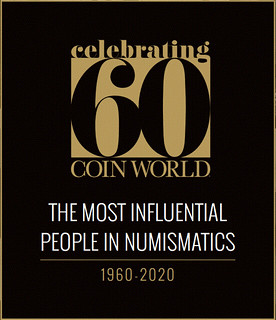 "I read with deep interest our friend Pete Smith's comments on Coin World's just-published review of "The Most Influential People in Numismatics." I believe it's a fact that recognizing one individual in any
field automatically antagonizes 100 who were not recognized. In my years
with the Numismatic Literary Guild I became quite familiar with the cry
"there are too many awards," by folks who really meant "I didn't get one!"
"I read with deep interest our friend Pete Smith's comments on Coin World's just-published review of "The Most Influential People in Numismatics." I believe it's a fact that recognizing one individual in any
field automatically antagonizes 100 who were not recognized. In my years
with the Numismatic Literary Guild I became quite familiar with the cry
"there are too many awards," by folks who really meant "I didn't get one!"
Coin World (CW) showed commendable precision in its wording "influential people in numismatics," side-stepping "great people in numismatics." A few years ago "influential" might have included Dr. William H. Sheldon, Walter Breen and Stanley Apfelbaum... CW touched on many bases in its kaleidoscope of recognition and a few of those recognized are newcomers to the commercial world. "Big deal dealers" are not the only people in the commercial sector, though they could be argued over for months or years! CW sought a wide selection and it certainly achieved it"
Others, like Pete, had a different view. -Editor
Bill Eckberg writes:
"I completely agree with Pete Smith's comments. Many of those listed, such as yourself, are influential numismatists for whom what I can sell it for
and what I can buy it for
are not the most important aspects of a coin. There are, unfortunately, a number of people on the list for whom the bottom line is more important than scholarship, history and artistry."
David Menchell writes:
"I don't put much credence in Best of this or Top Ten of that kind of listings. We all have our views on what's important in any field, but I agree with Pete Smith, that aside from some noteworthy individuals, such as Dave Bowers and Ken Bressett, this list is more about commercial interests than numismatic relevance. There are a bunch of dealers who may be helping to financially support the activities of clubs and educational groups, but quite honestly, I can't see how selling expensive coins makes you important to the field and study of numismatics.
"Several of the names I didn't recognize at all; some I recognize based, as Pete had mentioned, on ads in numismatic periodicals, but that's it. As far as I know, I haven't seen any articles or books they've written, I haven't run into them at Summer Seminar; I haven't seen them funding the ANA library or a curator's chair at the ANS.
"In my opinion, there are many unsung heroes of numismatics who get little praise but who are much more important to the hobby. In my areas of interest (American Colonials, medals, tokens), I can easily think of Ray Williams, who tirelessly speaks to numerous clubs and recently gave an ANA seminar on Colonial Currency; the late Syd Martin, whose scholarship and hard work resulted in four definitive references on Colonial Coinage, Tony Terranova, who probably knows more about Colonial coinage than anyone currently in the field and is a generous contributor to many organizations, Neil Musante, who has produced two superb references on Bolen and Washington medals, and has served as the publisher of the highly regarded publication of the Medal Collectors of America, The MCA Advisory, my friend and mentor, John Adams, who has a prodigious knowledge of early American numismatics and has produced multiple books on a range of topics from 19th century auction catalogues to the Comitia Americana series of medals. And I can name dozens more.
"So if being influential has a dollar sign attached, in terms of expensive coins sold, then I guess many of these individuals belong on the list. But in terms of the long term importance to the hobby and field of numismatics, this list falls far short of the goal of honoring those people who truly educate and increase the enjoyment of the hobby for us all. "
John Linhoss writes:
"Steve Hayden's name should have been included in the Most Influential People in Numismatics. Steve has a top shelf catalog auction and has a regular auction on eBay. He responds to each and every method of questions or comments sent to him. He is honest and has never met a stranger. He will take the time to educate people who are unaware of what type of coin, medal, or token they may have.
"I have had dealings with 12 people listed in the Coin World publication. I have good memories with nearly all. Some who were listed, I had never heard of before, but was glad to read about them. It's the dealers that were not included that stands out more than the ones that were featured. Steve Hayden is at the top of that list.
"I must say, The E-Sylum is the best online publication. It keeps people informed and interested and brings a desire to get more involved to being a better numismatist. Thank you,"
Martin Kaplan writes:
"One of my collecting areas, World Banknotes, came to mind. The International Bank Note Society (IBNS) has a Hall of Fame. I suspect there are members who should be included on such a list.
https://www.theibns.org/joomla/index.php?option=com_content&view=category&layout=blog&id=30&Itemid=177
"
Peter Jones writes:
"My comments about Coin World's Influential Numismatists:
- How come Eric Newman, Sidney Martin, Ed Rochette, Dick Doty, etc. are all excluded? You got it! Dead people don't advertise!
- How come only two non-Americans are listed out of 96? Surely 98% of influential numismatists can't be American? You got it — foreigners don't advertise much in Coin World!
-
"The breakdown of "influential numismatists" includes
- 44% dealers
- 15% auction houses
- 15% grading services
They total 74% of "influential numismatists." And they all advertise.
- Only 19% were authors — they don't advertise.
- "Looking at ads in Coin World's list of influential numismatists and the Coin World monthly that came with it, there was an average of at least one full page per auction house, dealer or grading service, when prorated against individual "influential numismatists." I assume a full-page ad is three to four thousand dollars.
- "As a physician I have had similar experiences with magazines wanting to make you "top doctor," as long as you pay them considerable fees. I have spoken to restauranteurs who have the same problem."
I felt the same about the overwhelming US-centric mix. But it's Coin World's list, and they're free to choose their selectees. Their stated criteria were only that:
- the candidates had to be living
- current Coin World staff members were ineligible
- a candidate could be anyone who has had an effect on the hobby
"Effect on the hobby" was not defined. "Influential" is the key word in the name of the list. I've seen "Influencer" also used in reference to the list, although that isn't in the name. In the world of social media an Influencer is someone who drives the online narrative, grabs attention and redirects it. But to be "Influential" one has to accomplish much more than directing attention. To me, someone is influential in the world if the world becomes a different place as a result of their words and deeds. That's a higher bar, and the list would be much more selective.
Forgive my US-centric focus, but the first people who come to my mind are those such as John Albanese and John Dannreuther who were involved with the creation of third-party grading services. Love it or hate it, numismatics is a very different hobby today than it was before the advent of slabbing.
A second group would be those who open-sourced coin pricing information, and in the U.S. that would be Jim Halperin of Heritage. It was a game-changing move to place historical auction price data on the web. A.J. Gatlin of CoinArchives did something similar for ancient and world coin pricing.
I could go on, but I'll stop there. There will be other lists to argue over in the future.
In her CoinsWeekly email this week, Ursula Kampmann wrote: "The result is a list that could have perfectly been entitled [96] great people that are active in numismatics and that we like
. They certainly aren't the [96] most influential people in numismatics between 1960 and 2020."
As an ANA exhibitor learning the ropes, my instructors emphasized the key importance of the exhibit's title. Points for completeness, for example, are awarded for "completeness insofar as the exhibit's title states." A different title for the CW issue might have forestalled a lot of this criticism.
Otherwise, the product was perfectly fine and quite informative. As Pete Smith noted, he was able to make some 400 updates to his American Numismatic Biographies book based on the great information in this issue. It's a keeper, and I'll look forward to similar people-centric issues in the future from Coin World and competing publications around the world. The possible lists are many, as are the deserving selectees.
-Editor
To read the CoinsWeekly article, see:
The Most Influential People in Numismatics?
(https://coinsweekly.com/the-most-influential-people-in-numismatics/)
To read the earlier E-Sylum article, see:
ON INFLUENCE IN NUMISMATICS
(https://www.coinbooks.org/v24/esylum_v24n18a11.html)
JEWISH-AMERICAN HALL OF FAME WEBSITE UPDATED
Speaking of Halls of Fame, here's a press release about the upgrading of the website of the Jewish-American Hall of Fame. -Editor
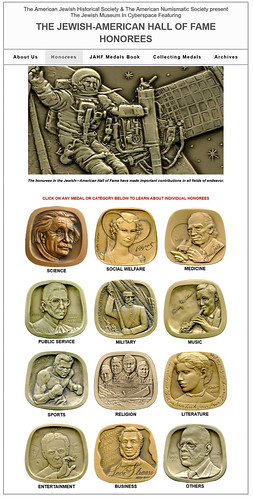 The Jewish-American Hall of Fame's website www.amuseum.org made its first appearance on the Internet in 1996. In 2002, it won the Numismatic Literary Guild's award as the Best Non-Commercial Website. In May, the newly expanded website makes its debut, just in time to celebrate Jewish American Heritage Month. Mel Wacks, Founding Director of the Jewish-American Hall of Fame, has worked for over a year to make this possible, along with programmer Sumera Manzoor.
The Jewish-American Hall of Fame's website www.amuseum.org made its first appearance on the Internet in 1996. In 2002, it won the Numismatic Literary Guild's award as the Best Non-Commercial Website. In May, the newly expanded website makes its debut, just in time to celebrate Jewish American Heritage Month. Mel Wacks, Founding Director of the Jewish-American Hall of Fame, has worked for over a year to make this possible, along with programmer Sumera Manzoor.
Over 60 pages have been added, featuring large photos of the Jewish-American Hall of Fame medals and texts that are easy to read on smart phones as well as computer screens. The new pages picture medals created by renowned medalists like Eugene Daub, Alex Shagin, Marika Somogyi, Paul Vincze and Gerta Ries Wiener. Pages are easily navigatable by topic, such as Entertainment, Military, Music, Science, Sports, etc. Honorees range from the famous (Albert Einstein, George Gershwin, Ruth Bader Ginsburg, Houdini, et al) to relatively unknowns (Gertrude Elion, Ernestine Rose, and Rosie
Rosenthal). In addition to biographies, an informative and entertaining video can be viewed for virtually every inductee. The old website, containing a Virtual Tour Through 500 Years of Jewish American History, Quizzes, The Harry Flower Collection of Einstein Medals, etc., has been kept intact and accessible in the Archives section of the revamped website. In addition, several books can be read on the website: The Handbook of Bibilical Numismatics
and Medals of the Jewish-American Hall of Fame
by Mel Wacks, and Antisemitic Bigotry on Historic Medals
by Dr. Benjamin Weiss.
Mel Wacks says You can spend hours walking virtually around the halls of the Jewish-American Hall of Fame at
www.amuseum.org and enjoy viewing masterpieces of medallic art, and learning about outstanding individuals and historic events, who you may or may not have ever heard of.
Wacks also invites everyone who would like to see the physical exhibit of Jewish-American Hall of Fame plaques, to visit the Virginia Holocaust Museum in Richmond.
BORCKARDT RECEIVES EAC'S SILBERMAN AWARD
And speaking of individual numismatists worthy of honors, here's the press release on Mark Borckardt recent award. Congratulations. -Editor
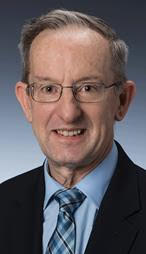 Mark Borckardt, Senior Cataloger and Senior Numismatist at Heritage Auctions, has been awarded The Herbert Silberman Award by the Early American Coppers Club (EAC). The award is the EAC's highest honor and is presented to individuals who have shown exceptional service to their fellow members and to numismatics in general.
Mark Borckardt, Senior Cataloger and Senior Numismatist at Heritage Auctions, has been awarded The Herbert Silberman Award by the Early American Coppers Club (EAC). The award is the EAC's highest honor and is presented to individuals who have shown exceptional service to their fellow members and to numismatics in general.
Just 10 people have been granted the award during the last 40 years. In addition to Borckardt, longtime Heritage client and friend Denis Loring also received the award this year. The EAC is a community of collectors and researchers with a passion for the early copper coinage of the United States. Borckardt currently serves as the Early American Coppers' National Historian.
This is well-earned recognition for Mark, a specialist who has dedicated his life to furthering the advancement of numismatic knowledge and research,
said Todd Imhof, Vice President of Heritage Auctions.
The award is named after the EAC's creator, Herbert A. Silberman, who founded the club in 1967 along with 93 charter members.
Previous award recipients include:
C. Douglas Smith, 1981
Thomas D. Reynolds, 2000
Rod Burress, 2003
Harry Salyards, 2011
Del Bland, 2014
Chris McCawley and Bob Grellman, 2016
Jack Young, 2018
Denis Loring, 2021
For more information on Early American Coppers, Inc., see:
http://eacs.org/
MICHAEL OLSON RECEIVES MINT DIRECTOR'S AWARD
Louis Golino published a nice article on CoinUpdate about Michael Olson's U.S. Mint Director's Award. Here's an excerpt - see the complete article online. -Editor
Michael Olson, a former member of the Citizens Coinage Advisory Committee who originally proposed the idea of commemorating the 50th anniversary of the 1969 Apollo 11 Moon landing and spearheaded passage of the legislation that created the set of coins issued in 2019 for that event, recently received a Director's Award from U.S. Mint Director David Ryder for his major contributions to that coin program.
U.S. Mint directors have a longstanding tradition of awarding excellence among Mint employees with various awards including Rittenhouse medals modeled after one created in 1871 by Charles Barber that depicted the first U.S. Mint director, David Rittenhouse.
Achievements made in service to the U.S. Mint by people not employed by it include medals given to individuals who have served on the CCAC and the Director's Coin of Excellence — modeled on a tradition in the military of commanders awarding coins to personnel who perform beyond expectations. One of those was given in 2011 to NGC Vice President Miles Standish.
The Director's Award for work performed on the Apollo 11 Commemorative Coin program consists of a paper certificate produced by the Mint's in-house graphics department. There is no monetary award, coin, or medal presented in conjunction with the framed certificate. The Mint identified more than 100 employees to receive the Director's Award for their work on the Apollo 11 50th Anniversary five-ounce Proof silver coin. The bulk of the employees recognized work at the Philadelphia Mint where the Apollo 11 five-ounce Proof silver coin was produced.
In recognition of Mr. Olson's efforts to make the Apollo 11th 50th Anniversary Commemorative Coin Program a reality, Director Ryder chose to also present a Director's Award certificate to Mr. Olson. Due to COVID-19 restrictions, there was no presentation ceremony, so the Mint mailed the certificate to Mr. Olson.
To read the complete article, see:
Michael Olson receives U.S. Mint Director's Award for work on Apollo 11 coin program
(http://news.coinupdate.com/michael-olson-receives-u-s-mint-directors-award-for-work-on-apollo-11-coin-program/)
VOCABULARY TERM: DROP HAMMER PRESS
Here's another entry from Dick Johnson's Encyclopedia of Coin and Medal Terminology. -Editor
Drop Hammer Press. Pneumatic or gravity type press which delivers a hard sharp strike. Not suitable for coins or large medals, it can be used, however, for striking small, charm- size items; but is best suited for trimming or piercing. The reason for this is its quick acting force – ideal for shearing, trimming or piercing – but unsuitable for die striking (which requires time for metal flow with longer extrusion dwell). Despite this, attempts have been infrequently made to strike coins with drop hammer presses. The latest, in 1920, occurred when the large quantity of coins were required in England when it converted from silver to a quaternary coinage.
The firm of J.R. Gaunt & Son, of Birmingham, was one of several private minters given orders by the Royal Mint to strike millions of florins, shillings, sixpence and threepence. Gaunt had only drop hammer presses and were successful in producing only 16,000 coins before terminating the contract and returning the dies to the Royal Mint. Drop hammer presses were an early type press, powered by hand or other means long before electricity, but whose use is strictly limited in modern times. See striking, presses and pressroom practice.
Interesting - I was unaware of the 1920 drop hammer press coins. Do the coins exhibit diagnostics allowing collectors to tell whether a coin was among the 16,000 drop hammer strikes? -Editor
To read the complete entry on the Newman Numismatic Portal, see:
Drop Hammer Press
(https://nnp.wustl.edu/library/dictionarydetail/515802)
MORE ON DAVID ULYSSES PROSKEY (1853-1928)
Here's more from the David Prosky entry from the online draft of John Lupia's book of numismatic biographies. This is an excerpt with the full article and bibliography available online. -Editor
2. Second Period - 1877 - 1885 - John Walter Scott & Scott & Company.
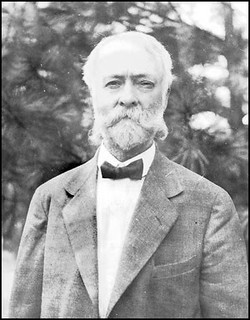 From 1877 to 1885 he worked for John Walter Scott in his firm Scott & Company. In 1877, David Proskey became the new editor of Scott's Coin Collector's Journal, and head of the coin and medal department. Proskey was editor of Scott's Coin Collector's Journal from Volume 2 (1877) to Volume 13 (1888).
From 1877 to 1885 he worked for John Walter Scott in his firm Scott & Company. In 1877, David Proskey became the new editor of Scott's Coin Collector's Journal, and head of the coin and medal department. Proskey was editor of Scott's Coin Collector's Journal from Volume 2 (1877) to Volume 13 (1888).
In 1879, Proskey was involved in creating the J. W. Scott & Co., 1861 Confederate half dollar restrikes from an original die.
When Scott sold his corporate stock to a syndicate run by the Calman Brothers and Henry Collin in December 1885, they renamed it Scott Stamp & Coin Company, Limited, and kept Proskey as head of the coin and medal department. While at both firms Proskey catalogued both stamps and coins. He decided to leave in 1887 and form an independent company which quickly evolved into a partnership with Harlan Page Smith. Scott Stamp & Coin Company, Limited recruited Lyman Haynes Low to take over the management of the coin and medal department upon Proskey's departure August 31, 1887. Apparently, Low specialized only in coins and after a tenure of ten years went independent as Proskey had done.
From 1879 to 1916 Proskey's expertise on Large Cents were the hallmark among the collectors who attributed their specimens based on Proskey's numbering system that were found among the various coin auction catalogues.
In 1880, he is listed in the U. S. Census as living with his parents and family in Washington Township, Bergen County, New Jersey.
By about 1881, the Proskey Brothers, particularly David and Alexander established themselves in the building materials industry selling pine and cypress shingles with a commercial lumber yard in the business and industrial zone of Paterson, New Jersey on River Street. David probably served mainly as the investor backer of his brother. According to William Nelson (1847-1914), the historian of Paterson, New Jersey, Edward Van Houten, David Proskey's father-in-law, lived at 448 River Street, Paterson, Passaic County, New Jersey. However, Nelson was doing his research between 1897 and 1901 when the book was published. This residence was the Proskeys established residence for thirty years from the 1881 until about 1911, which, if it were a single family dwelling necessitates Edward Van Houten having moved in after his daughter Matye married David in 1884.
In May 1880, Ebenezer Locke Mason, Jr., reported in Mason's Coin Collectors' Herald, Vol. II, No. 1, June (1880) :2a, that he had met Proskey at New York together with Henry Griswold Sampson and John Walter Scott buying coins from each of them during one of his coin buying excursions.
From 1882-1883 Proskey published a series on Civil War tokens in Scott's Coin Collector's Journal.
By 1884 he was conducting his personal coin business by mail from the office of Proskey Brothers, 448 River Street, Paterson, N. J., manufacturers of yellow pine lumber and Cyprus shingles, and general storekeepers.
In 1884, he published a comprehensive list of all known California private gold in Scott's Coin Collector's Journal.
On January 3, 1884, he married Matye (Machard) "Madge" Van Houten (1852-1934), daughter of [Iddo] Edo "Edward" Van Houten (1813-1893), and Ellen Lake (1819-1881), a noted family of Passaic, New Jersey, of the Dutch Reformed Church at Acquackanonk. They had three sons : David Verus Proskey (1885-1956); Elbert Alexander Proskey (1887-1956); Harold Van Houten Proskey (1889-1970); and a daughter : Elsie Lake Proskey (1893-1960), who later married Charles F. Whadcock.
To read the complete article, see:
PROSKEY, DAVID ULYSSES
(http://www.numismaticmall.com/numismaticmall-com/proskey-david)
Dave Hirt writes:
"While reading through the article on David Proskey, I kept looking at his picture. Something was ringing a bell in my mind. Then I remembered, I have a book in my library with that picture. It took some thinking, but finally I remembered that it was in the M L Beistle book on Half Dollar Varieties. I pulled the book, and there it was, the same photo as in The E-Sylum.The book was published in 1929, the year after the death of Proskey.
"Beistle wrote a dedication. "To the memory of David Proskey. A numismatist who knew, and was always ready to impart that knowledge when it was appreciated." Interestingly, the Beistle book was one of my earliest reference books, purchased in 1956 or '57."
HARVEY STACK'S NUMISMATIC FAMILY, PART 95
The latest article in Harvey Stack's blog series rounds out the year 1984. -Editor
In July 1984 Stack's once again, as we had since 1979, joined with joined with Rarcoa, Paramount and Superior to offer our popular "Apostrophe" auction, in this case Auction '84. As previously this event had a wealth of choice, rare and important coins, 500 lots from each company. The sale included 1802 and 1803 Proof silver dollars, 1884 and 1885 trade dollar Proofs, early Proof sets from the 1860s and more, early U.S. gold in mostly Mint State, an 1838-O half dollar, an 1800 Stella and an 1855 Round Kellogg $50 gold, just to mention some of the highlights.
Our September public auction featured a comprehensive offering that combined the collections Dr. George Kosko and Thomas A. Bergin, as well as duplicates from the Yale University Collections. It brought to auction all denominations of. U.S. coins from the half cent to the $20 double eagle, mostly in Choice Mint State and Proof condition. It was another Stack's sale that presented "something for everyone," which always attracted bidders in the thousands.
We had two very important consignments for our October 1984 auction and we decided to issue two separate catalogs: The Bartle Family Collection and the Richard Picker Collection. Having two catalogs allowed us to commemorate the endeavors of these collectors, both of whom had passed away before the sale of their coins. The Bartle Collection was a comprehensive offering of United States coins, from the half cent to the $20 gold, very complete and with many highlights. Similar to other comprehensive offerings like this, it attracted almost record-breaking attendance and very large quantities of bid sheets. Of particular note in the Bartle Collection were complete sets of Indian $2.50 and $5 gold, a complete set of Indian Head $10 gold (including both varieties of 1907 and the extremely rare 1933) all in outstanding condition. The sale also had an outstanding group of Morgan dollars and a lot of type coins, which were always popular and in demand. It took three sessions to sell the Bartle Family Collection.
Our separate catalog for the Richard Picker Collection was focused on colonial and early American coins. Richard Picker was a very close friend of both Norman and me. We all met just after World War II and as time went on, he also became good friends with Larry after Larry joined the business full time in the 1970s. In the beginning Richard earned his money by owning and servicing vending machines, and he was simply a collector, enamored with our country's early issues. He studied a lot and made many friends among the famous collectors of this historic series. His love for colonial coins led him to trading and dealing with collectors of similar issues, later becoming a full-time specialist in this fascinating area of numismatics. Since the New York area had over nine coin clubs and the ANS museum, he attended all meetings to learn more from the specialists, and started to buy and sell to many collectors. He provided collectors such as Bareford, Roper and many others with guidance as how to build a meaningful collection. Richard actually lived in the same town that Norman and I lived in with our families, and our friendship grew all the years we knew him. When we need an opinion or cataloging help Richard was there to help us. He was sorely missed when he passed away, a year before this sale.
The Picker Collection was only 326 pieces, but among them were a number of rarities and almost impossible-to-find examples. These included a Sommer Island shilling, a New England shilling, 45 Massachusetts silver coins, a Lord Baltimore piece, a Mark Newby farthing, Higley coinage, Chalmers coins, and three Continental dollars. There were also comprehensive collections of New Jersey, Connecticut, and Vermont coppers, Albany Church pennies, Fugio cents, and 28 different Washington pieces (including the Roman Head and "Born Virginia", to mention just two). Though not as large as the Roper Collection a year earlier, it was a splendid assemblage that brought many specialists to the Stack's sale.
We closed out 1984 in December with a group of specialty collections of United States, foreign and ancient coins that had been formed by Dr. Constantine Generales, Harry H. Trackman, and duplicates from the Floyd T. Starr Collection. These collections were combined in a single catalog and the sale appealed to a large number of collectors as it covered so many areas of numismatics.
The story of Stack's in 1984 relates how broad and specialized Stack's could be as we served all our clients' needs as they built their collections. Markets change and interests vary, but by having a wide range of expertise and offering a wide panorama of items and services, Stack's found that our friends and clients responded by returning to us when they wanted to buy or sell coins or consign their collections to auction.
To read the complete article, see:
Harvey Stack Remembers: Growing up in a Numismatic Family, Part 95
(https://www.stacksbowers.com/News/Pages/Blogs.aspx?ArticleID=harvey-stack-remembers-part-95)
To read the earlier E-Sylum article, see:
HARVEY STACK'S NUMISMATIC FAMILY, PART 94
(https://www.coinbooks.org/v24/esylum_v24n17a18.html)
THE COIN ANALYST: CELEBRATING 10 YEARS
Writer Louis Golino recently celebrated a milestone - 10 years of "The Coin Analyst" column. Congratulations. Here's an excerpt from his CoinWeek piece. -Editor
After a decade and about 300 of these columns, it is time to take stock of what I have tried to do with this platform that has enabled me to continue growing as a numismatic writer and develop a wide range of contacts within the field.
Let me begin by taking the opportunity to thank each of you who has generously shared your insights with me and my readers. And let me thank my readers not just for reading the column but for your comments, feedback, and suggestions, which are all appreciated.
Column Origins
In May 2011, the publisher of CoinWeek, Scott Purvis, asked me to do a two-part article on collecting Morgan dollars after seeing some articles I wrote for other publications. He then asked if I wanted to start writing a regular weekly column.
Scott wanted to expand the former CoinLink site that consisted of links to numerous articles on coins into CoinWeek – a free online daily coin magazine — with original contributions from a number of writers such as Al Doyle, Charles Morgan, Hubert Walker, Mike Markowitz, and myself. The site has continued to grow extensively under the helm of editors Morgan and Walker, especially with the addition of videos and podcasts, and is today the most visited coin news website with over a million unique visitors per month.
Because of my background as a former policy analyst for the federal government and news analyst and op-ed writer for newspapers, I dubbed the new column The Coin Analyst, which has been focused on helping collectors get the most out of their hobby by informing them with in-depth discussion of important trends and developments in numismatics and in the coin market.
It was something that I felt was missing in the existing coverage of coins in the U.S., which typically consists of news articles, especially on new releases, that tend to draw heavily on information from mints and their officials and original numismatic research as perhaps best exemplified by feature articles in The Numismatist, where I have had a monthly column since July 2015 on modern world coins. Something in between those two was needed, and I have tried to help fill that gap.
To read the complete article, see:
The Coin Analyst: Celebrating 10 Years – Taking Stock and Looking Forward
(https://coinweek.com/modern-coins/the-coin-analyst-celebrating-10-years-taking-stock-and-looking-forward/)
CHARLES I SHILLING AT MARYLAND COLONIAL FORT
The Washington Post reported that archaeologists found a Charles I shilling at a dig in St. Mary's, MD, perhaps brought to the New World by English settlers in 1634. -Editor
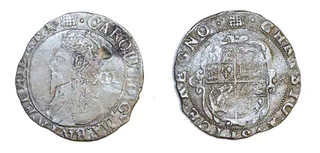 It was a silver shilling, bearing the likeness of the doomed King Charles I, and one day three centuries ago, someone lost it inside the Maryland colonial fort at St. Mary's.
It was a silver shilling, bearing the likeness of the doomed King Charles I, and one day three centuries ago, someone lost it inside the Maryland colonial fort at St. Mary's.
It was an elegant coin, showing the crowned king in profile with goatee and lace collar. It was probably missed by its owner, and probably searched for, in vain.
Last week, archaeologists announced that, about 380 years after it was lost, it turned up during the historic dig that recently uncovered the outlines of the fort at the first permanent English settlement in Maryland.
The shilling had been struck in the royal mint in the Tower of London about 1633 or 1634, chief project archaeologist Travis Parno said Friday.
And it may have been carried by one of the original 150 colonists who arrived at St. Mary's on two ships, the Ark and the Dove, in March 1634.
The discovery is rare, Parno said, and further proof that the archaeologists have correctly pinpointed the fort's location.
It nailed our site date exactly,
he said. The shilling has a mint mark — a tiny image of a castle portcullis — that dates it.
We don't find a lot of coinage,
he said. We don't have any shilling that matches this one exactly. To find one that's that early is a unique thing for us. … It was quite a revelation.
The shilling may predate the later use of tobacco as currency in Maryland, which happened after the colony established tobacco as a cash crop, Parno said.
The discovery was kept under wraps for safekeeping while the coin was studied. It was unveiled Wednesday when Maryland Gov. Larry Hogan (R) visited the site.
To read the complete article, see:
Archaeologists find rare, nearly 380-year-old English coin during Maryland dig
(https://www.washingtonpost.com/history/2021/05/02/rare-coin-maryland-dig/)
2021 ANS COINAGE OF THE AMERICAS CONFERENCE
The 2021 Coinage of the Americas conference theme has been announced by the American Numismatic Society. Here's the call for papers. -Editor
Coinage of the Americas Conference (COAC) 2021 Call for Papers
The Victor D. Brenner Sesquicentennial
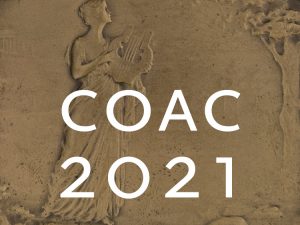 American Numismatic Society (ANS)
American Numismatic Society (ANS)
New York, New York
September 17–18, 2021
Submission Deadline: July 1, 2021
Email submissions and questions to Dr. Jesse Kraft, ANS Assistant Curator of Assistant Curator of American Numismatics at
jkraft@numismatics.org.
The American Numismatic Society is proud to announce the reintroduction of the Coinage of the Americas Conference (COAC). Since the mid-1980s, COACs have been considered the leading venue for the presentation of academic research that pertains to numismatics of the Western Hemisphere. The papers given at past COACs have routinely been published and resulted in a number of edited volumes. These texts have since become standard references on their respective topics. After 2009, COACs experienced a hiatus that will end with the upcoming conference this year.
For COAC 2021, the ANS seeks presentations and papers related to famed sculptor, Victor David Brenner, for the 150th anniversary of his birth on June 12, 1871. Born in what is now Lithuania, Brenner initially followed in the family business of jewel engraving before immigrating to the United States in 1890. After studying in both the United States and, most notably, in Paris with Oscar Roty, Brenner quickly positioned himself to become one of the foremost medallists in the United States. While his most well-known piece is, undoubtedly, the Lincoln Cent of 1909, Brenner created more than 200 medallic works of art throughout his illustrious 35-year career. He produced works privately, for the United States Mint, the Medallic Art Co., and several other producers of the early 20th century. Even in his own lifetime, his rise to fame in America during a time of mass immigration to the United States was heralded as the ultimate achievement of the American Dream. We welcome all proposal submissions connected to either his life or his work, and encourage those related to (but not limited to):
- His biography, or specific sections of his life
- Historical narratives of specific works of art produced by Brenner
- Brenner's work or style in comparison to (an)other contemporary artist(s)
- His relationships with other artists, companies, or the U.S. Mint
- Exhibitions that featured his work
- Brenner's legacy beyond his life
During the conference, each presenter will have 50 minutes, including time for Q&A. After the conference, each invited participant has until December 31, 2021 to submit their polished article for possible inclusion in an edited volume. Final papers should be no more than 8,000 words (not including tables, charts, image captions, or references).
Presently, the ANS hopes to hold this as our first hybrid event with speakers and attendees participating both in person and online. As such, this will also be the first major event that the ANS hosts with in-person guests since the initial outbreak of the COVID-19 pandemic. Conditions for in-person attendance will be dependent on the requirements implemented by the ANS at that time, based on CDC and NYS guidelines.
For submission proposals, please provide the title of your topic, a 200-word abstract, and speaker/presenter information (name, title, agency/organization, and contact information) to Dr. Jesse Kraft at jkraft@numismatics.org by July 1, 2021. The selection committee will notify those who submitted successful proposals by July 15, 2021.
The Coinage of the Americas Conference is a great concept and I'm glad to see it being revived. Please consider submitting a paper or attending. -Editor
To read the complete article, see:
Coinage of the Americas Conference (COAC) 2021 Call For Papers
(http://numismatics.org/brenner-cfp/)
THE BOOK BAZARRE
2021 ANA SUNDMAN AND MONEY TALKS SPEAKERS
The American Numismatic Association (ANA) is also planning an event - the 2021 World's Fair of Money convention in the Chicago suburb of Rosemont. Speakers are sought for the Sundman Lecture and Money talks series. -Editor
Symposium Overview:
Since the invention of coinage, certain coins have stood out for their beauty, their bold design or their sheer size. From the Decadrachms of Syracuse to the 1907 ultra-high relief Saint-Gaudens $20 and the modern monster coins,
this year's Sundman lecture submissions should be based on the history behind big, bold and beautiful coins. Papers that emphasize new research and scholarship will be prioritized. Selected presenters will receive a $250 honorarium.
Submission Guidelines:
If you wish to be a speaker at the symposium, please submit a summary of your lecture, not to exceed 500 words. Each summary should contain an introduction, a brief discussion of the subject, and sources and research method. The deadline for submissions is June 4, 2021.
Free and open to all attendees of the World's Fair of Money, the symposium will take place on Wednesday, August 11, 2021 at the Donald E. Stephens Convention Center in the Chicago suburb of Rosemont.
Money Talks Overview:
Share your expertise, ideas and research with fellow hobbyists during a 30- to 45-minute Money Talks presentation. Previous presentations have included such topics as Siege Notes: The Currency of War,
Strategies to Dispose of Your Collection and Curious Currency of the World.
Submission Guidelines:
Those interested in giving a Money Talks presentation should submit proposals and a brief bio online at
money.org/numismatic-events/money-talks or email
sgelberd@money.org. Presentations should be accompanied by digital images. Proposals are due by May 21, 2021.
Free and open to all attendees of the World's Fair of Money, Money Talks will take place Thursday and Friday, August 12 and 13, 2021 at the Donald E. Stephens Convention Center in the Chicago suburb of Rosemont.
For more information, see:
https://www.money.org/presenters-wanted
2021 ANA WORLD'S FAIR OF MONEY CONFIRMED
For more on the ANA convention itself, here's a press release published earlier this week. -Editor
Safety protocols may limit size of the show
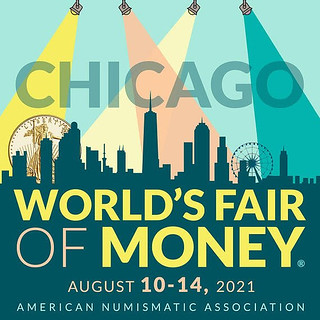 Coin collectors can breathe a sigh of relief.
Coin collectors can breathe a sigh of relief.
The Donald E. Stephens Convention Center in Rosemont, Illinois – a suburb of Chicago – announced on May 4 that it will resume hosting trade shows and events beginning in July, which is great news for those hoping to attend the American Numismatic Association's (ANA) World's Fair of Money (WorldsFairOfMoney.com), Aug. 10-14.
The convention center, one of the largest such facilities in the U.S., plans to reopen with the health and safety of attendees top of mind, which likely means adhering to social distancing, wearing masks and establishing disinfecting protocols. The convention center has not yet indicated whether limits will be placed on the number of people allowed in the event facility at one time.
To adhere to safety protocols, the ANA currently is limiting the number of dealer tables to 300 to allow for appropriate distancing between booths. Once the bourse has sold out, dealers will be placed on a wait list. In the event that COVID conditions improve and protocols are relaxed, the ANA may increase the number of dealer tables to 500.
Produced by the nonprofit American Numismatic Association, the annual World's Fair of Money is considered the biggest week of the year for collectors of coins, paper money, tokens and medals. The event traditionally features expansive educational forums led by notable speakers sharing their numismatic expertise; exhibits of rare treasures from private collectors and the ANA's Money Museum; hundreds of dealers buying and selling numismatic items in all price ranges; and major auctions by Heritage Auctions (HA.com) and Stack's Bowers Galleries (StacksBowers.com). A first-ever "Dealer Day" will be held immediately prior to the show on Aug. 9.
For more information, see:
https://www.money.org/worldsfairofmoney
ARCHIVES INTERNATIONAL AUCTION 67
Here is the announcement for the May 26, 2021 sale by Archives International Auctions. -Editor
ARCHIVES INTERNATIONAL AUCTIONS OFFERS HISTORIC 1927, PALESTINE CURRENCY BOARD, 5 POUNDS BANKNOTE RARITY ALONG WITH HUNDREDS OF RARE BANKNOTES, BONDS AND SHARES AT ITS MAY 26th , 2021 PUBLIC AUCTION IN RIVER EDGE, NEW JERSEY
The auction will be held by Archives International Auctions at their offices in River Edge, N.J.
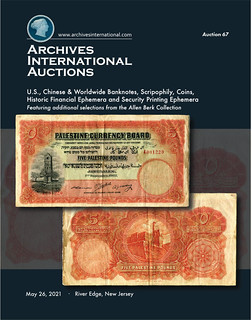 The May 26th, 2021 auction by Archives International Auctions is highlighted by a Palestine Currency Board, 1927, £5 Banknote Rarity as well as dozens of rare banknotes rarely seen at auction. Archives International will offer additional selections from the Allen Berk Worldwide Banknote Collection. This will be one of many auctions to feature Allen Berk's numismatic treasures over the coming months. Auction 67 auction will consist of over 1000 lots of rare and desirable U.S. & World Banknotes, Scripophily, Coins, Historic Financial Ephemera and Security Printing Ephemera.
The May 26th, 2021 auction by Archives International Auctions is highlighted by a Palestine Currency Board, 1927, £5 Banknote Rarity as well as dozens of rare banknotes rarely seen at auction. Archives International will offer additional selections from the Allen Berk Worldwide Banknote Collection. This will be one of many auctions to feature Allen Berk's numismatic treasures over the coming months. Auction 67 auction will consist of over 1000 lots of rare and desirable U.S. & World Banknotes, Scripophily, Coins, Historic Financial Ephemera and Security Printing Ephemera.
The 1927, Palestine Currency Board issue banknotes are all considered major rarities and are missing from almost every significant collection and rarely come up for auction
, stated Dr. Robert Schwartz, President of Archives International Auctions. Also included in the auction are a wide variety or rare and desirable banknotes, many having been off the market for decades or are new to the collecting community, that will enhance the collections of every level of collector and dealer
.
The auction will include hundreds of World Banknotes highlighted by the Palestine Currency Board, £5, 1 September 1927, P-8a, banknote rarity of the highest order. The note also has the lowest serial number available in private hands, S/N A001220, and is red-orange and pale green, with the White Tower at Ramleh at the left, with values at each corner, reverse green with the Citadel of Jerusalem at center. The note is an original PMG graded Very Fine 25
with notation of very light staining. Additional highlights in the auction include hundreds of lots of banknotes with many group lots from an old-time dealer's stock as well as items from old estate collections and consignments.
The auction begins with Chinese and Asian banknotes including a Ch'ing Dynasty, Year 8 (1858) 2000 Cash Issued Banknote in AU 55; a Commercial Bank of China. $5, 1920, Specimen "Shanghai Branch Issue" Note in Gem Uncirculated 66 EPQ, and is the highest graded out of 23 listed in the PMG census; A Pair of Hong Kong, 1929 and 1930 Dated Hongkong & Shanghai Banking Corp. notes with rarely seen early dates; An estate collection of 59 lots of Persian and Iranian banknotes having never been offered previously at auction; and additional auction highlights including a China, 1912, Bank of China, $1 Peking Branch Issue Rarity; 3 different 1882, Standard Oil Trust stock certificates signed by J.D. Rockefeller and Flagler; a Guatemala, 1916, Banco de Occidente, 5 Pesos high grade note; a Russia, Imperial Russia, 1822, 3,360 Rubles, Specimen Bond rarity similar to the 1822 Nathan Mayer Rothschild Bond issue; a high-grade Puerto Rico, 1895 Billete de Canje, Circulating Bill; an extremely early New York City, 1719 Land Deed Issued to Abraham de Peyster mentioning Broad-Way
and signed by many early Colonial notables; and hundreds of additional rare and desirable banknotes, scripophily and ephemera lots.
The U.S. banknote section is highlighted by a sequential error quartet of F.R.N., $10, Series 1977 A, Consecutive Error Quartet With 3rd Printing on Backs and includes colonial, small type and fractional issue lots.
The U.S. and World Scripophily session will include over 350 lots of Automobiles, Railroads, Banking and Finance, World, and many other desirable topics of Bonds and Shares with many rarities. Also included are dozens of lots of Security Printing Ephemera, Autographs, Checks, Drafts & Bills of Exchange and Historic Financial Ephemera.
Previews will be limited and by appointment only and we will be observing strict safety precautions including the wearing of masks and observing social distancing to protect our team as well as our guests. We will do our best to accommodate anyone who desires additional information and photographs. For questions, please call 201-944-4800 or email info@archivesinternational.com.
The online catalog for the Wednesday, May 26th, 2021 auction is on Archives International Auctions' website and can be viewed via the Archives International live bidding platform. It can also be viewed as a Virtual Catalog or downloadable Sale 67.pdf on their website. To pre-register for Live Internet Bidding, log on to the Archives International Auctions website, at www.ArchivesInternational.com.
Archives International is now working on their Summer and Fall 2021 auctions and are seeking quality consignments for future auctions or outright purchase including U.S. and worldwide banknotes, coins, stocks, bonds, stamps, postal history, historic ephemera, and autographs. To sell or consign one piece or an entire collection, please call AIA at (201) 944-4800; or e-mail them at info@archivesinternational.com
You may also write to Archives International Auctions, at 1060 Main Street, River Edge, NJ 07661, U.S.A. To learn more about Archives International Auctions and the auctions planned for May 26 th, 2020, log on to www.ArchivesInternational.com.
MORE HOLABIRD MAY 2021 SALES SELECTIONS
Here are some numismatic lots in the upcoming Holabird sale. -Editor
14K gold-plated Sterling silver belt buckle, intricately carved, with an 1899 S $20 double eagle gold coin mounted in the center with the reverse visible through a hole in the back of the buckle. Buckle is approx. 3.75 x 2.25 inches, and weighs ~3.39 troy ounces (~105.6 grams) including the coin. Buckle is marked on the back / STERLING / HE / 14 K GOLD /. Coin is in VF/XF condition, and the buckle shows very little wear in the ornate carving on the front.
For the numismatist who has everything - except a big belt buckle with a double eagle on it. -Editor
To read the complete lot description, see:
Gold-plated Sterling Silver Belt Buckle with VF/XF 1899 $20 Gold Coin [133721]
(https://holabirdamericana.liveauctiongroup.com/Gold-plated-Sterling-Silver-Belt-Buckle-with-VF-XF-1899-S-Double-Eagle-133721_i41002554?t=HEBWS9)
Bank of Nova Scotia, Halifax, Jan. 2nd, 1935. Canadian Bank Note Company, Limited. PMG 25, Very Fine. 2.75 x 5.75"
To read the complete lot description, see:
Bank of Nova Scotia $10 Bank Note [134029]
(https://holabirdamericana.liveauctiongroup.com/Bank-of-Nova-Scotia-10-Bank-Note-134029_i41002708?t=HEBWS9)
Unarguably one of the best looking examples of college currency. Three beautiful vignettes on obverse, "will pay five dollars to bearer in College Currency." Lithographers: The Kellogg and Bulkeley Co. of Hartford. This bill is for use in the business practice department of Hannums Hartford Business College and is worthless for other purposes. Dated Aug. 1877.
From about 1830 through the rest of the century, the Kellogg brothers published popular lithographs in Hartford, Connecticut. They issued the second largest number of decorative prints intended for the American public, surpassed only by their New York rivals, Currier & Ives, producing thousands of lithographs, most hand-colored, which ended up in the homes and work places of Americans.
Great note. -Editor
To read the complete lot description, see:
Business College Bank Currency [131198]
(https://holabirdamericana.liveauctiongroup.com/Business-College-Bank-Currency-131198_i41002710?t=HEBWS9)
City of New Orleans-Municipality No. One $50 Note Oct. 30, 1837. Unissued.
From 1836 to 1852, the City of New Orleans was made up of three municipalities, with Municipality No. One being the old city, primarily inhabited by Creoles and French. Each municipality had its own council, police force, service providers, tax-collection entity, and note-issuing bank. This large format $50 Post Note grades About Uncirculated with no rips or tears.
Lithographer: Jho. V. Childs - New Orleans This note measures 3.75" x 8.75". The obverse is black and the reverse is blue with a large N. O. in the design.
Cool history - I wasn't aware of that separation. -Editor
To read the complete lot description, see:
City of New Orleans Municipality No. One $50 Note [131222]
(https://holabirdamericana.liveauctiongroup.com/City-of-New-Orleans-Municipality-No-One-50-Note-131222_i41002712?t=HEBWS9)
Lot of ten. Pre and Post earthquake! Eight stereo views; with two duplicates of the Mint and the earthquake. One 4x6" photo. One postcard.
Numismatic stereo cards are great ephemera collectibles. Do any of our readers have an antique stereo viewer to look at them with? -Editor
To read the complete lot description, see:
San Francisco United States Mint Stereo View Collection [123463]
(https://holabirdamericana.liveauctiongroup.com/San-Francisco-United-States-Mint-Stereo-View-Collection-123463_i41002717?t=HEBWS9)
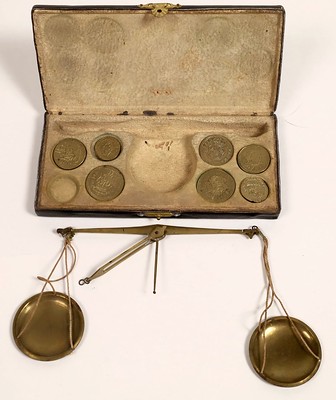 Beautiful hand balance coin scale in black leather case, 3 x 7 inches. The seven weights are facsimile coins, one weight is missing. Some coin weights are legible: romana doppia (Vatican issued gold coins); Sovrano (sovereigns); genova. (The genovino was a gold coin used in the Republic of Genoa from 1252 to 1415.)
Beautiful hand balance coin scale in black leather case, 3 x 7 inches. The seven weights are facsimile coins, one weight is missing. Some coin weights are legible: romana doppia (Vatican issued gold coins); Sovrano (sovereigns); genova. (The genovino was a gold coin used in the Republic of Genoa from 1252 to 1415.)
What's not to like about an old coin scale? -Editor
To read the complete lot description, see:
Coin Scale with Facsimile Coins for Weights [131220]
(https://holabirdamericana.liveauctiongroup.com/Coin-Scale-with-Facsimile-Coins-for-Weights-131220_i41002722?t=HEBWS9)
To read the earlier E-Sylum article, see:
SELECTIONS FROM HOLABIRD MAY 2021 SALES
(https://www.coinbooks.org/v24/esylum_v24n18a24.html)
FOUNDATIONS OF THE FIRST MONETARY SYSTEM
This article discusses the bronze age origins of the first monetary system. Found via The Explorator newsletter. To subscribe to Explorator, send a blank email message to: explorator+subscribe@groups.io. -Editor
Long before cryptocurrencies, mobile payments and investments in the stock market, the economy of an area was based on exchanging a surplus good for another that was needed. Until the advent of coins and bills, bartering was the only known form of trade. A new study suggests that the germ of what we now know as the European economic system appeared at the end of the Bronze Age, thanks to the popularization of a measurement system and countless bronze fragments that functioned as currency.
The study, published in the Journal of Archaeological Science, details that measurement tools began to be used in southern Italy between 2300 and 1700 BC. These tools quickly spread throughout Europe and between 1200 and 800 BC they
were already in use throughout the continent. Giancarlo Lago and Nicola Lalongo, the authors of the study, describe these utensils as follows: The only weighing device known at that time was the balance: a simple horizontal beam of wood or bone, with a central support point and two saucers. hanging on each side
.
Different researchers have found numerous bronze and metal deposits from this time throughout Europe, the meaning of which has not been unraveled. The locations of these clusters are distributed indistinctly in numerous environments. Nor do they follow a religious or ritual pattern, since, despite finding fragments of swords or axes, all the parts of the same object are never found. The analysis of more than 3,000 pieces from 150 deposits found in Italy and northeastern Germany revealed that these follow a very close proportion to the stone weights used in the balances. "The weight of the fragments is always a multiple of the same unit of measurement," the researchers acknowledge. The weights vary between 8 and 10 grams, as does the shekel, the unit of measurement used in Mesopotamia and that always had an equivalent in silver.
"We always think that the origin of the currency had to be gold," says the professor from the Autonomous University of Barcelona, "but it is the least appropriate material because it is too limited in nature." The only mineral abundant enough to establish itself as a bargaining chip was silver, although most of it was found in the Middle East. Europe, for its part, was rich in copper mines. Risch does not rule out that at some point other material was used, although he believes that it is impossible to know today: "There could be another type of currency, such as fabrics or grain, but archaeologically we are not able to recognize it as such."
This study gives very solid evidence that, in addition to currencies, there is a measurable exchange system. For the modern man it is something obvious, but for the formation of the currency and the markets it is not so obvious
, considers Risch. Researchers believe that the existence of money in Prehistory may represent a full stop in our concept of the modern world. "If we admit that Western civilizations were not responsible for the invention of money, perhaps we can begin to banish the prejudices that support our supposed superiority," they say.
To read the complete article, see:
The Bronze Age euro
(https://elpais.com/ciencia/2021-05-08/el-euro-de-la-edad-de-bronce.html)
PAQUET 1861-S DOUBLE EAGLE OFFERED
Stack's Bowers Senior Numismatist and Consignment Director James McCartney published a short blog article about about a Paquet Double Eagle in the firm's upcoming June sale. -Editor
The 1861-S Paquet Reverse is perhaps the most famous collectible Type I double eagle and is recognized well beyond the specialists of the series. Anthony C. Paquet was born in Hamburg, Germany on December 5, 1814, and arrived in Philadelphia in 1848. In early 1857, he took up contract work for the Philadelphia Mint before finally being hired on as an assistant engraver. By far his most well-known work is the United States military's highest decoration for valor, the Medal of Honor instituted by President Abraham Lincoln on July 12, 1861. Among his other projects at the Mint were a series of unsigned pattern coins, including a fascinating copper double eagle pattern, Judd-257. To this day, the reverse dies he prepared for the 1861 double eagles remain the only coin designs that have been positively attributed to Paquet, who left the Mint in 1864.
On January 5, 1861, production of the new reverse dies by Paquet began at the Philadelphia Mint and was almost immediately halted after concerns were raised that the narrow rim of the reverse design would wear poorly. Mint Director James Ross Snowden sent directives to New Orleans and San Francisco to cease use of the new dies and return to using the original Longacre dies. Snowden's directive did not reach the San Francisco Mint until early February, and only after 19,250 double eagles with Paquet's reverse were struck and subsequently issued. The typical survivor is well worn, if not also impaired, and to this day, not a single problem free Mint State example has been confirmed by PCGS or NGC.
We are thrilled to offer a beautiful VF-35 (NGC) 1861-S Paquet $20 in our June 2021 Auction, which is one of only about 250 survivors known. It displays bright yellow-gold surfaces that are accented by deeper honey patina in the protected areas on both sides. The details are uniformly bold with sharp denticles and full definition to Paquet's distinctive elongated lettering on the reverse. Alongside several New Orleans issues from the 1850s, the 1861-S Paquet reverse represents a key to this type and we expect considerable excitement when this piece crosses the auction block!
This exceptional 1861-S Paquet double eagle will be featured in lot 2571 of our June 2021 Showcase Auction, hosted at the state-of-the-art auction gallery in our new Costa Mesa, California headquarters.
To read the complete article, see:
Historic Paquet 1861-S Double Eagle Offered in our June 2021 Costa Mesa Auction
(https://www.stacksbowers.com/News/Pages/Blogs.aspx?ArticleID=historic-1861-paquet-reverse-double-eagle-stacks-bowers-galleries)
U.S. COIN COMPOSITION CHANGES
As a data guy I'm partial to a good infographic. A couple weeks ago we discussed a U.S. Mint website article which reviewed 100 years of silver dollar coinage. Here's another article with a decent infographic summarizing changes to U.S. circulating coin composition over the years. The article also has two nice image galleries showing coin production methods in the pre- and post-steam eras, plus a video of modern coin production. See the complete article online for more. -Editor
The U.S. Mint has produced coins for this nation for over 225 years. Coin production evolved from slow horse- and man-powered machinery to fast computer-controlled machines. Explore the history of coin production and how the process changed through the years.
Coinage at the First Mint
When the U.S. Mint first opened in 1793, coin production was a very physical, slow, and imprecise process. The first Mint in Philadelphia consisted of a three-story brick building along with a series of smaller buildings housing crude horse- and man-powered machinery. The Mint lacked experience designing and engraving coins, and coin production got off to a slow start.
The Coinage Act of 1792 authorized the Mint to produce copper, silver, and gold coins for circulation. The Act specified that the government must buy the copper needed to coin half cents and cents (as raw material or as blank coins already the appropriate size for coining). But depositors such as banks and individuals provided the silver and gold. The silver and gold were either in the form of foreign coins or bullion that the Mint melted down and refined to the appropriate fineness for coining...
The Switch to Steam Power
The 19th century ushered in the use of steam power, and big changes in coin production. In 1816, rollers and cutting presses were the first machines powered by a steam engine. Then in 1833, the Mint hired Franklin Peale to travel to mints in Europe to observe their processes. He brought back many ideas for advancements to the Mint and its equipment.
Two years after Peale returned, the Mint built steam-powered coining presses modeled after those used in Europe. A single person operated a press, dropping blank coins down a tube to feed between the dies. Coin production became a lot less labor-intensive, opening up many jobs to women.
Electricity and the Modern Age
In 1901, the third Philadelphia Mint facility opened with new, upgraded equipment. Electricity replaced steam to power all aspects of coin production. Throughout the 20th century, advances in machinery led to further increases in coin production numbers.
Today, the Mint follows the same basic process as it did 200 years ago, but with computer-controlled machines working at unbelievable speeds. One coin press produces 720 coins per minute, which means that the Philadelphia Mint produces 46,800 coins per minute if all of its 65 presses are operational.
I'm not as big a fan of this graphic since it leaves out the equally important changes in size and weight over the years, such as the introduction of the small cent. This graphic also leaves out obsolete denominations such as the half cent and 2, 3 and 20 cent pieces. But it does a decent job for the subjects it does tackle. Look closely and you'll see each coin image is surrounded with a pie chart noting the breakdown of composition for each coin (most are alloys vs. pure metal). You can click on the image to see a larger version on our Flickr archive, or see the original at the link below (click that image to expand as well). -Editor
To read the complete article, see:
Historic Coin Production
(https://www.usmint.gov/learn/history/historic-coin-production)
To read the earlier E-Sylum article, see:
A CENTURY OF SILVER DOLLARS
(https://www.coinbooks.org/v24/esylum_v24n17a25.html)
1854 RESCUE OF THE S.S. SAN FRANCISCO MEDAL
The June 2021 Stack's Bowers Numismatic Americana auction includes this rare medal commemorating the rescue of the S.S. San Francisco. Here's an excerpt from the lot description - see the complete text online. -Editor
1854 Merchants and Citizens of New York Medal for the Rescue of the S.S. San Francisco. Dies by C.C. Wright, struck and assembled by Ball, Black, & Co., New York. Silver. Choice About Uncirculated.
45.5 mm. 756.1 grains. Housed in an original applied rope bezel and loop with anchor decoration, as made. Awarded to Robinson Miller of the Lucy Thompson. Engraved on the reverse in multiple lines: PRESENTED TO ROBINSON MILLER, A SEAMAN ATTACHED TO THE AMER: SHIP "LUCY THOMPSON," BY THE MERCHANTS AND CITIZENS OF NEW YORK AS A TESTIMONIAL OF THEIR DEEP SENSE OF HIS HUMANE AND COURAGEOUS CONDUCT IN ASSISTING TO RESCUE THE PASS-ENGERS, OFFICERS, & CREW OF THE STEAMER SAN FRANCISCO IN THEIR PERILOUS EXPOSURE ON THE OCEAN, AFTER THE DESTRUCTIVE GALE OF THE 24 DECEMBER, 1853.
Charles Cushing Wright's die shows high enough relief to require double striking (two blows of the coining press), evidence of which is seen around much of the legends. In the foreground, the steamer San Francisco is seen amidst heavy seas, while dinghies ferry survivors to two schooners, representing the Antarctic and the Three Bells, in the background. The San Francisco's flag flies upside down, the classic signal for a seemingly doomed ship. The finely fashioned bezel perfectly frames the medal, which was struck with heavy diagonal denticles inside the rim on both sides to lend a double-framed appearance. A die crack within the denticles is seen at the right side of the reverse; smaller breaks are present within the reverse denticles near 6 o'clock and 8 o'clock.
In the aftermath of the San Francisco's loss at sea, the captains of the ships that came to her aid were lauded as heroes. Congress voted gold medals to the captains of the Kilby, Three Bells, and Antarctic, a medal cataloged by Julian as LS-11. The city of Philadelphia also authorized gold medals for the captains, now known as Julian LS-12. The Humane Society of Massachusetts presented medals to officers of all three ships. The city of New York also authorized medals for the heroes of the day, including the officers and seamen of the Lucy Thompson, the first ship to return survivors back to New York City.
Carl Carlson found records of just five examples of this medal that reached collector hands. Two of them, including this one, were included in the John J. Ford, Jr. Collection. One, presented to William McDonald of the iLucy Thompson/i, was offered in our October 2004 presentation of Ford's collection of life saving medals. First offered in the October 1864 W. Elliot Woodward sale and acquired from the March 1981 Garrett IV auction by Ford, it brought $17,250 in 2004. Ford's second specimen, the medal here offered, was sold with his collection of Western Americana, bringing $25,300 in October 2007. One of the few other specimens offered in modern times was sold in the June 1999 Andrew Zabriskie sale by Sotheby's as lot 556, offered after a century off the market with a fine provenance that included the February 1859 Augustus B. Sage sale and the legendary 1882 sale of the Charles I. Bushnell Collection. The only other two specimens traced by Carl Carlson were the example awarded to James Taylor of the Three Bells, first offered in January 1863 and last seen in the January 1890 Robert Coulton Davis Collection sale, and an unnamed example in Edward Cogan's sale of October 1878. Though it has been posited that the unnamed example is the white metal trial we sold in our November 2014 sale (lot 10093), the revelation of an unnamed silver example that sold as lot 12080 in our March 2016 Baltimore Auction could suggest otherwise. However, that piece was recently discovered in a Nashua, New Hampshire estate by an antique dealer seemingly without a numismatic context that might be suggested by appearance in a coin sale in 1878. As such, we suspect that is likely a new example which, if true, would bring the census of known examples to six.
Connected to one of the great nautical disasters of the 19th century, this medal is of interest to specialists in naval and life saving medals, California Gold Rush history, and the medallic works of the great C.C. Wright, who died in June 1854. Generations of collectors have come and gone without even a single specimen being offered through public auction. The Garrett and Zabriskie specimens, two of the five known, spent over a century in each of those cabinets; another has not been seen since 1890. Fortunate is any collector who gets to see a specimen of this rarity, let alone own one.
To read the complete lot description, see:
Extremely Rare 1854 Rescue of the S.S. San Francisco Medal
(https://auctions.stacksbowers.com/lots/view/3-RELMW/1854-merchants-and-citizens-of-new-york-medal-for-the-rescue-of-the-ss-san-francisco-dies-by-cc-wright-struck-and-assembled-by-bal)
CONFEDERATE MONEY AFTER THE CIVIL WAR
This article by Colorado State University history professor Colorado State University addresses the question, "What happened to Confederate money after the Civil War?" It's got a great photo from the National Archives. -Editor
At the time the Civil War began in 1861, the United States government did not print paper money; it only minted coins. As a historian of the American Civil War, I study how the Confederate government used a radical idea: printing paper money.
In 1861, 11 states tried to leave the United States and form a new country, causing a four-year war. Wars cost a lot of money so the new country, called the Confederate States of America, printed money as a way to pay its bills.
But this money was more like a promise – in technical terms, a promissory note
– because its certificates were really pledges to give the currency's holder a specific amount of gold or silver, but only if the Confederacy won the war.
Bills issued earlier in the war said right on them, Six months after the ratification of a treaty of peace between the Confederate States and the United States, the Confederate States of America will pay
the bill's amount to the person holding it. Later currency delayed the promised payout until two years after a peace treaty.
When the South started losing the war, the value of Confederate money dropped. In addition, prices for food, clothing and other necessities rose because many items were scarce during the war. Graybacks became almost worthless.
In late 1864, a few months before the war's end, one Confederate dollar was worth just three cents in U.S. currency.When the Confederate army surrendered in April 1865, graybacks lost any remaining value they might have had. The Confederacy no longer existed, so there was nobody who would exchange its paper money for gold or silver.
To read the complete article, see:
What happened to Confederate money after the Civil War?
(https://theconversation.com/what-happened-to-confederate-money-after-the-civil-war-159117)
THE BOOK BAZARRE
VIETNAMESE PHAN BOI CHAU NOTES
Howard Daniel writes:
"I was contacted a couple of months ago by a friend about a sample book discovered in China (or Hong Kong) with three Vietnamese paper items in it and which were offered to Kelvin Cheung of Spink & Son, the branch of a London-based auction firm in Hong Kong. My friend and Kelvin did not know exactly what they were so my friend knew I probably had the knowledge about them. When I saw the images, I literally jumped up from my chair! They were samples of the earliest of Phan Boi Chau's notes
and completely unknown to anyone knowing they actually exist, and they were absolutely unique. Their existence had to remain confidential until Kelvin owned them.
"I did not hear or read more about them until I received an email from a authenticator at PMG. My name had been given to the authenticator to work on getting them slabbed. I got some better images, colors (I am partially color-blind!) and measurements of them and rewrote my catalog pages to include the three notes so the authenticator could read the complete story about them. There are now five unique pieces known! We worked on the label and a grader completed the work for them to be slabbed. I am praying that I got everything right about them!
"I contacted Kelvin about what happened and we corresponded about it. I sent him my new draft pages for all of Phan Boi Chau's unique pieces and he asked me to allow him to put them in his auction catalogue. I agreed and one of his staff, Joseph Lam, worked on the catalog pages."
Wow! What a great discovery. Howard provided several sample pages and some are shown here. Thanks! It will be an interesting sale. -Editor
For more information on the sale, see:
https://spink.com/
LOOSE CHANGE: MAY 9, 2021
Here are some additional items in the media this week that may be of interest. -Editor
Over on the Coin Talk forum there's a nice discussion of Felix Schlag's original Jefferson Nickel design, including some photos of Monticello.
In 1938, Felix Schlag won a $1,000 award for his Jefferson Nickel design. Schlag won the award in a competition that involved 390 or over 400 other artists, depending upon your source of information.
Schlag's victory continued a policy that Theodore Roosevelt had initiated in 1907 when he asked Augustus St. Gaudens to redesign American coinage. St. Gaudens work was ultimately limited to the $10 and $20 gold coins, but it set the trend. From 1907 until 1938, outside artists created all of the new designs for regular issue coins. That string would not be broken until Mint Director, Nellie Tayloe Ross, pushed hard to give John Sinnock the opportunity to design the Roosevelt Dime in 1945-6.
Recently, engraver, Ron Landis, issued 100 sets of the Jefferson Nickel with original Felix Schlag design. Landis first issued coins like this in the early 2000s for the Full Step Jefferson Nickel Club.
To read the complete thread, see:
Felix Schlag's original Jefferson Nickel design
(https://www.cointalk.com/threads/felix-schlag%E2%80%99s-original-jefferson-nickel-design.379075/)
Remember the 2003 Arkansas State Quarter Diamond? Here's a cool article about diamond-hunting in Crater of Diamonds State Park. -Editor
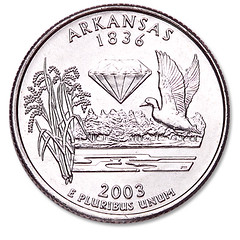 Officially, this cool little place is known as Crater of Diamonds State Park, a 911-acre, teardrop-shaped bundle of land two miles south of Murfreesboro, Arkansas, population 1,641. It is 232 miles from Dallas to the southwest, and 240 to Memphis in the northeast. The park has walking trails and 47 campsites and a gift shop selling souvenir pins, patches, and spoons, but most people come here to dig, and dig they do, for this state park is the world's only diamond-bearing site accessible to the public. What you find, you can keep. And despite the triplets striking out, other prospectors have struck it rich. Really, really rich.
Officially, this cool little place is known as Crater of Diamonds State Park, a 911-acre, teardrop-shaped bundle of land two miles south of Murfreesboro, Arkansas, population 1,641. It is 232 miles from Dallas to the southwest, and 240 to Memphis in the northeast. The park has walking trails and 47 campsites and a gift shop selling souvenir pins, patches, and spoons, but most people come here to dig, and dig they do, for this state park is the world's only diamond-bearing site accessible to the public. What you find, you can keep. And despite the triplets striking out, other prospectors have struck it rich. Really, really rich.
Arkansas has nodded to its diamond-producing legacy in myriad other ways. In 1912, a five-person committee from the Pine Bluff, Arkansas, chapter of the Daughters of the American Revolution (DAR) voted to approve a design for the state flag: a large white diamond on a rectangular field of red. In 1967, the state designated the diamond as its official gem. In 1993 and 1997, Hillary Clinton wore a naturally flawless,
uncut, pillow-shaped 4.25-carat yellow diamond found at Crater of Diamonds at her husband's presidential inaugurals. The Arkansas state quarter, which launched in 2003 and depicts rice stalks and a mallard flying above a lake, has a cut diamond front and center. All celebrate the simple, indisputable fact: that there is no other U.S. state that offers visitors the chance to get so close to actual diamonds.
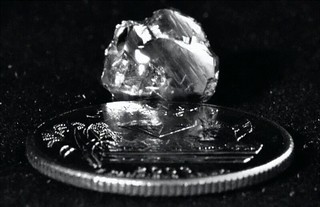
The park records one to two diamond finds a day,
says Waymon Cox, who is originally from Murfreesboro and has been a park interpreter at Crater of Diamonds since 2008. With enough dedication and looking in the right places in the right ways, your chances of finding one are good.
(Cox himself has found three.) Though the average diamond found at Crater of Diamonds is the size of a match head, between 20–25 points of weight—too small to be cut—1,021 of the diamonds found have been more than one carat. (There are 100 points in a carat.)
Contrary to popular belief, you do not need to be a professional gemologist to hunt diamonds at Crater of Diamonds State Park, which makes 1,500 tickets available online per day to visitors—you just need to be willing to get a little dirty.
To read the complete article, see:
Deep in southwest Arkansas is a state park that charges visitors $10 to search for gems that can be worth hundreds of thousands of dollars.
(https://www.afar.com/magazine/digging-for-diamonds-at-crater-of-diamonds-state-park-in-arkansas)
Coins were among items displayed at America's earliest museums. This Zoom event from the American Philosophical Society will take place Tuesday May 18th from 1:00 p.m.-2:00 p.m. EDT. Registration is required. -Editor
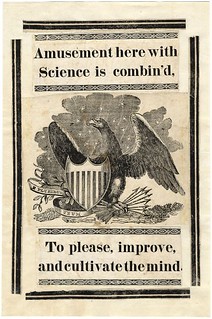 Celebrate International Museum Day as we travel into the past and learn about the whimsical Peale family and their historic museum!
Celebrate International Museum Day as we travel into the past and learn about the whimsical Peale family and their historic museum!
Join Museum Education Coordinator Ali Rospond for this informal and fun virtual tour about Charles Willson Peale, his family, and the first successful public museum, The Philadelphia Museum. Discover the mysteries of the Great Incognitum,
examine fossils, learn about the origins of common museum practices today, and most importantly, have fun!
In the words of Charles Willson Peale Amuseument here with Science is combin'd, To please, improve, and cultivate the mind.
This program will take place via Zoom and is an informal event. Registration is required.
Joel Orosz writes:
"There were a number of early museums that both collected and exhibited coins; prominent among them were Du Simitiere's and Peale's Museums in Philadelphia, the New-York Historical Society and the Tammany Museum in New York City, and the Western Museum, in Cincinnati."
For more information, see:
The Whimsical World of the Peales
(https://www.amphilsoc.org/events/whimsical-world-peales)
I was unable to attend the 2018 Medal Collectors of America conference at the Massachusetts Historical Society in Boston. For all of us who missed it, there are videos of presentations available on YouTube. This week I watched John Sallay's excellent talk on early American college secret society medals. -Editor
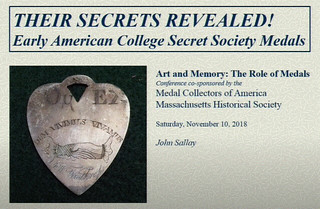 In this presentation "Their Secrets Revealed!" John Sallay exposes the history of early American college secret societies and their medals.
In this presentation "Their Secrets Revealed!" John Sallay exposes the history of early American college secret societies and their medals.
The conference on medals and medal collecting presented by Medal Collectors of America and MHS, included a series of presentations on the role medals have played in America history, the evolution of medallic art, and the ways medals have reflected American culture up through the 20th century.
MHS is proud to partner with the Medal Collectors of America, a national organization dedicated to the study and collection of artistic and historical medals. For further information, please see www.medalcollectors.org.
To read the complete article, see:
Medal Conference - Sallay - College Medals
(https://www.youtube.com/watch?v=-OcIuhf7Ghk&list=PL1FU5Ln1f9NUiUPLqE9d0iclcC1_dOPnG&index=4)
To read the earlier E-Sylum article, see:
VIDEOS: ART AND MEMORY: THE ROLE OF MEDALS
(https://www.coinbooks.org/v22/esylum_v22n41a08.html)
FEATURED WEB SITE: MEDAL COLLECTORS OF AMERICA
This week's Featured Web Site is the Medal Collectors of America.
Medal Collectors of America was founded in 1998 as a club dedicated to the study and collection of artistic and historical medals. Our goal is to encourage research and publication in the medal field, while bringing together all who are interested, through meetings, publications, and other activities. Our magazine, The MCA Advisory, is published quarterly in both print and electronic versions, and we encourage submissions from both newcomers and experienced researchers. We hold two meetings a year, which are open to all, featuring guest speakers on a wide range of topics relating to medal collecting. One is held in August in conjunction with the American Numismatic Association convention, and the second in January in conjunction with the New York International Numismatic convention. One of the greatest benefits to membership is the opportunity to acquire our annual medal, which is struck in very limited quantities and available only to members.

